RHP12-15 minutes 6/30/2017
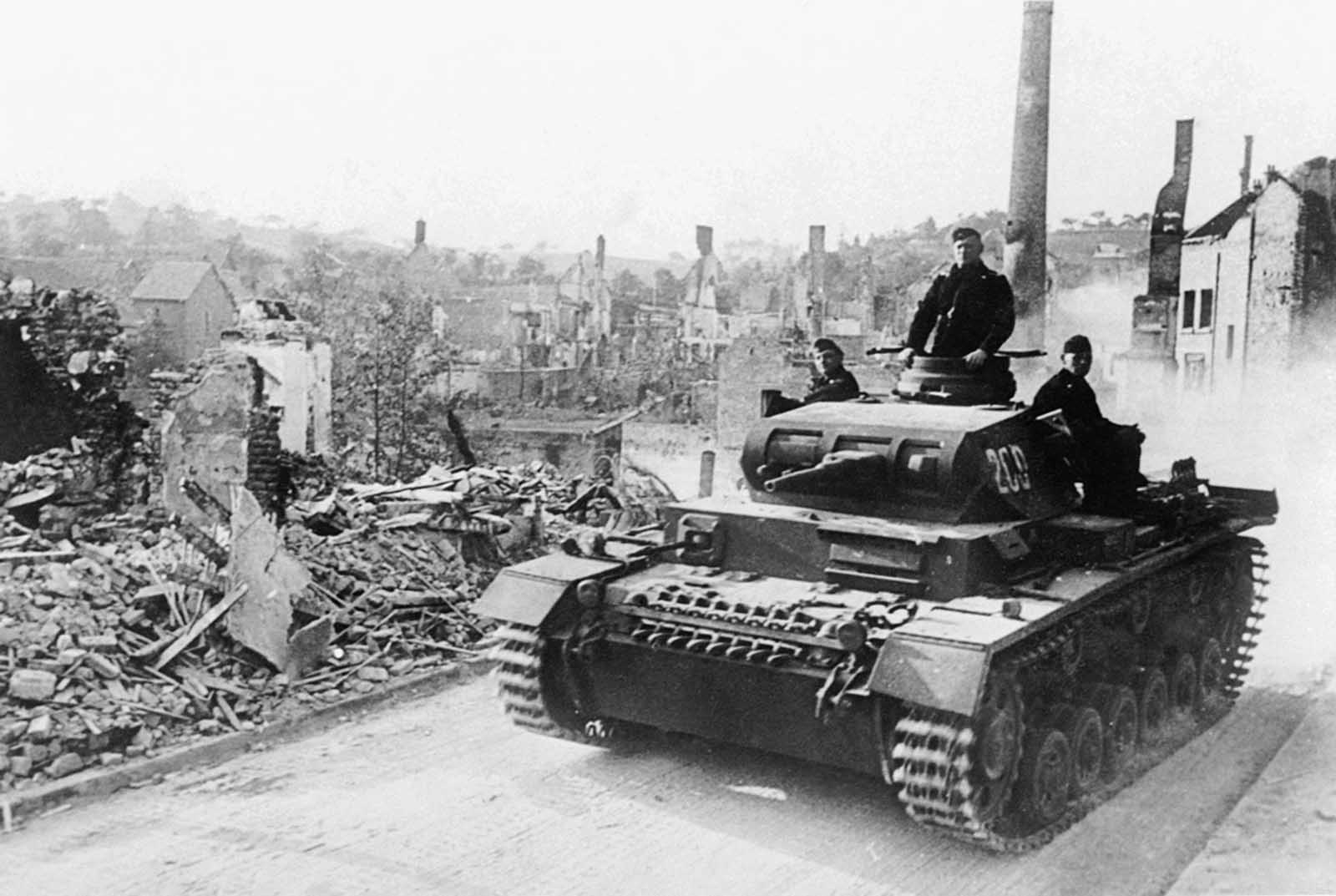
A German armored tank crosses the Aisne River in France, on June 21, 1940, one day before the surrender of France.
In the spring of 1940, an emboldened Germany asserted itself as a modern conqueror of nations, successfully invading and occupying six countries in fewer than 100 days. On April 9, 1940, Germany invaded Denmark, which capitulated in a mere six hours.
At the same time, Nazi warships and troops were entering Norwegian waters, attacking ships, landing troops, and starting a conflict that would last for two months.
The western European invasion began at 2:30am on May 10th, involving infantry crossing into Holland and Belgium and joined by German paratroopers taking the Belgian fort at Eben-Emael and its 2,000-strong garrison with the loss of just six German paratroopers. Other key paradrops netted strategic bridges and villages that would allow passage of German armor.
Paratroopers also landed in Rotterdam and The Hague under complete surprise. The Dutch and Belgians did their best to resist but their plans were badly dislocated by the loss of the border fortifications, which they were expecting to buy time for their troops to deploy.
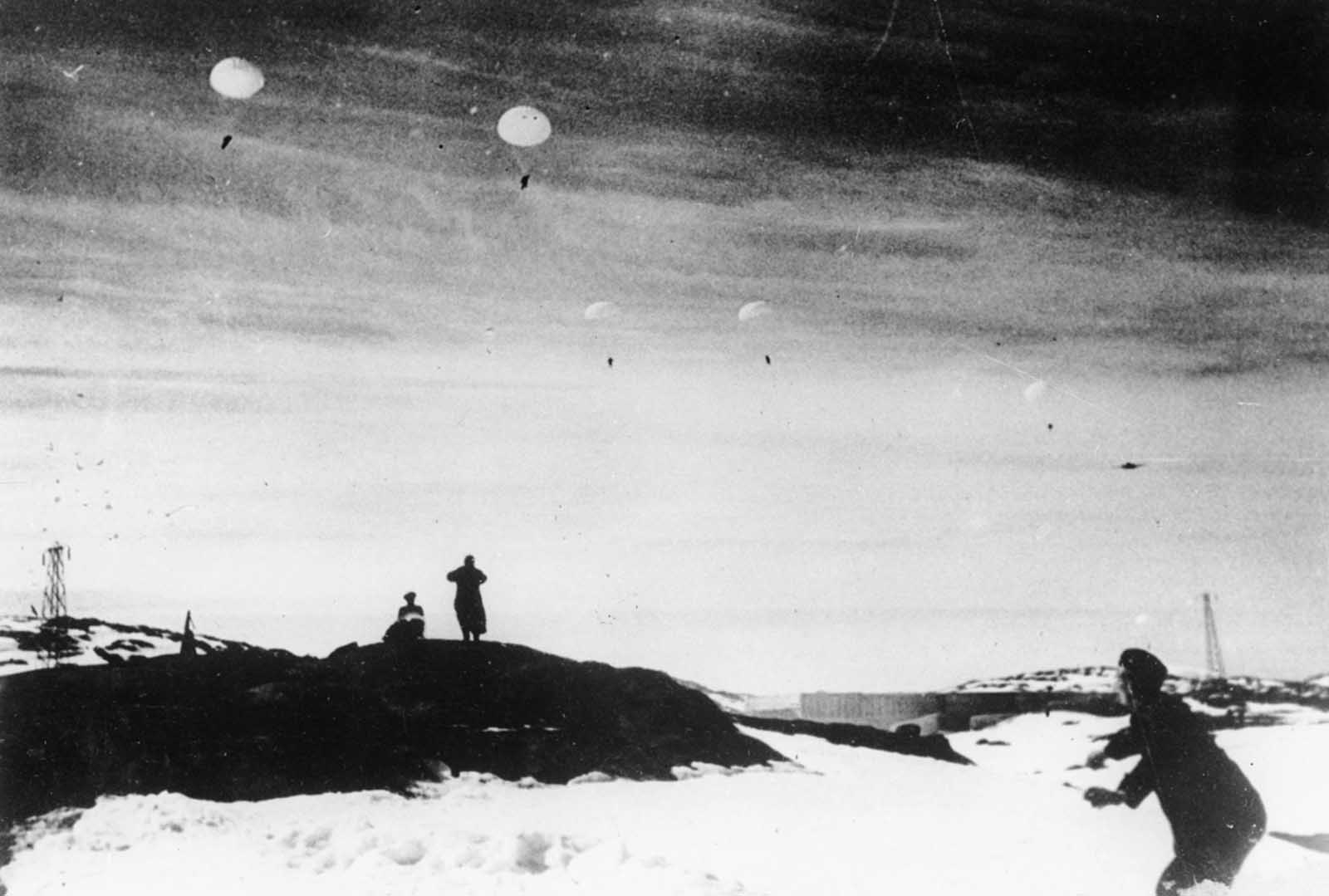
Waves of German paratroopers land on snow-covered rock ledges in the Norwegian port and city of Narvik, during the German invasion of the Scandinavian country.
While the Allies were distracted by the attacks in the Low Countries, the bulk of the German armored divisions were racing through the Ardennes almost unopposed, reaching the Meuse River on 12 May. The French reserve divisions barely slowed the German thrust, and by 15 May the Germans had a large bridgehead across the river.
A day later the German spearhead was through the French defenses and far behind the Allied front line. The German tanks reached the coast at the mouth of the Somme River on 20 September, cutting the British and French armies off from their supplies.
Marching on half rations, the British and French fell back, mounting a fighting withdrawal as they tried to close their wide-open flank. Sporadic attempts to re-establish contact with the rest of the French Army failed, leaving evacuation the only alternative.
Between 27 May and 4 June, the Royal Navy evacuated 200,000 British troops and 140,000 Belgian and French troops from Dunkirk, leaving 30,000 French behind holding the beachhead to the end.
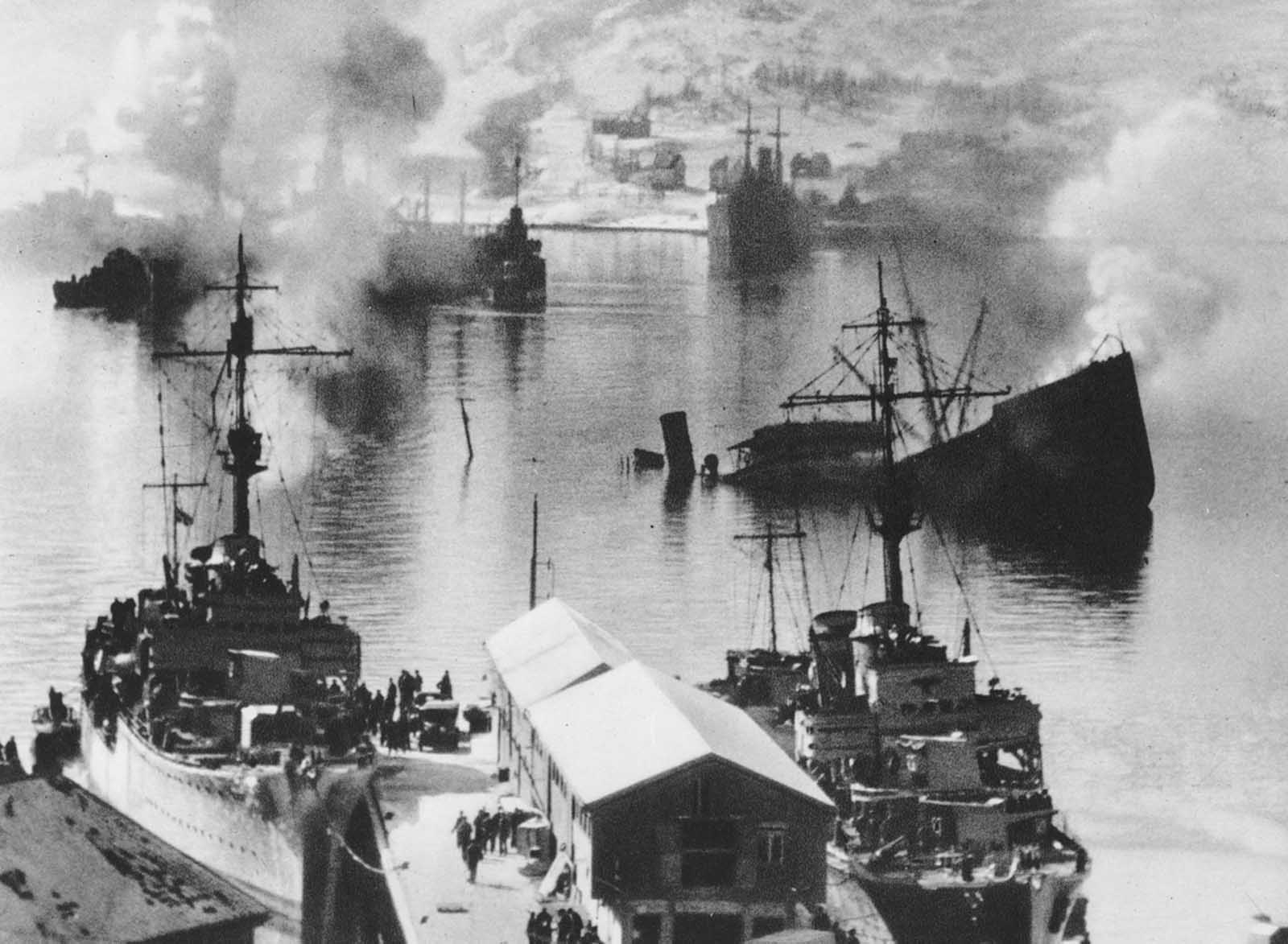
The remains of a naval battle in Narvik, Norway in 1940. Several battles between German and Norwegian forces took place in the Ofotfjord in the spring of 1940.
On 22 Jun 1940, General Pretelat surrendered the French Second Army Group, marking the end of the battle. The government of France formally surrendered three days later in the same railroad car at Compiègne that Germany had surrendered in at the conclusion of WW1 in 1918.
The French attempted to drag out the surrender negotiations by trying for more favorable terms, and they tried the patience of German leaders. Finally, at 5pm that day, Keitel communicated an ultimatum that the French must surrender by 6pm, otherwise, he would give the order to continue the attack on the rest of France. The French surrendered a few minutes after 1800.
To many German military leaders, the victory spelled an act of satisfying revenge for the defeat in WW1 and the shame that resulted from the post-WW1 sanctions. “I had a feeling that this was our hour of revenge for Versailles, and I was conscious of my pride in the conclusion of a unique and victorious campaign, and of a resolve to respect the feelings of those who had been honorably vanquished in battle”, said Keitel. “That day was the climax of my career as a soldier”.
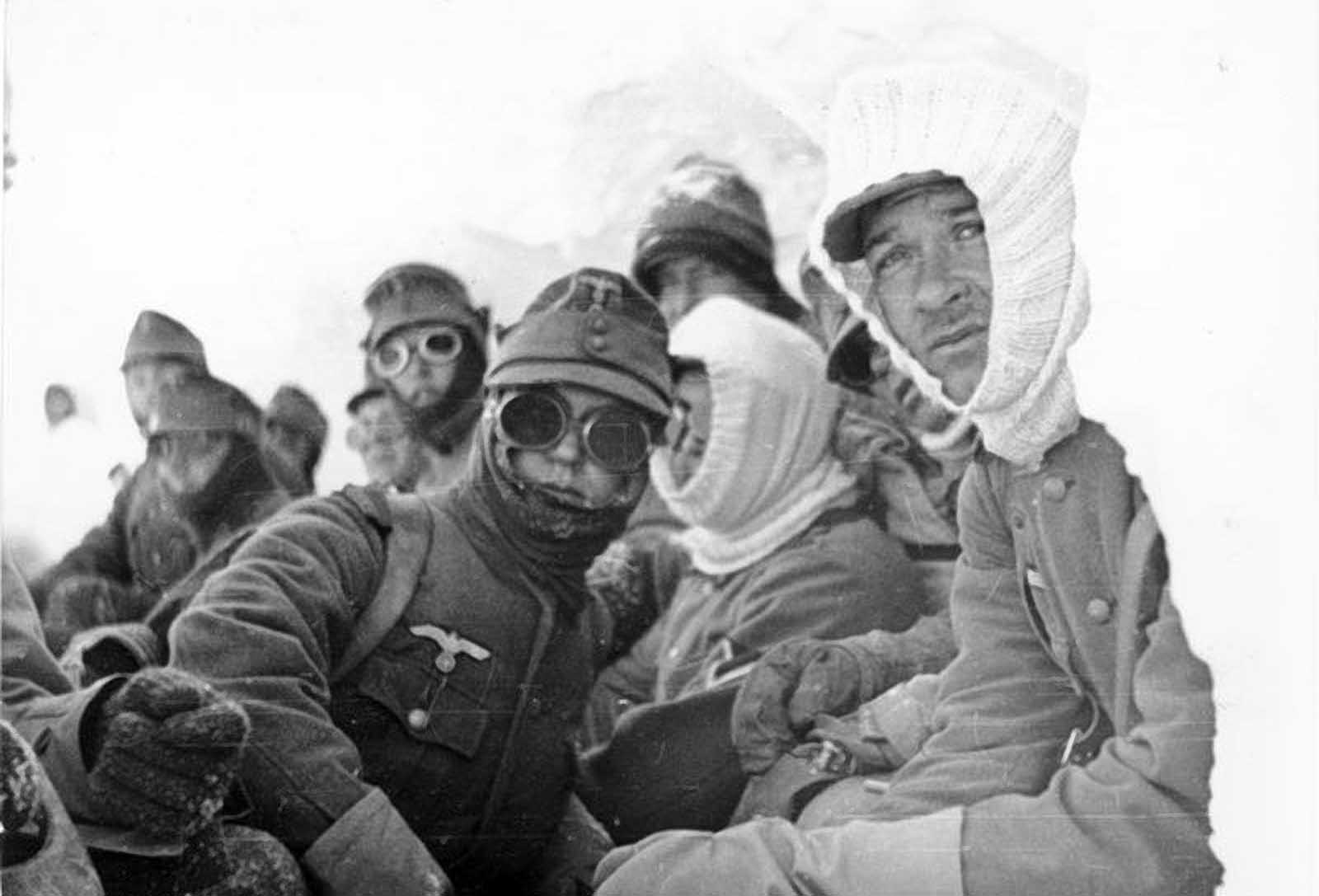
A group of German Gebirgsjägers (mountain troops) in action in Narvik, Norway, in 1940.
French Prime Minister Paul Reynaud, who refused to surrender, resigned and was replaced by collaborationist Philippe Pétain. France was divided into a German occupation zone in the north and the German-sponsored Vichy government in the south.
In London, de Gaulle announced his refusal to recognize the Vichy government, and instead established a new French government dubbed the Free French in London. At the end of the campaign, the Germans suffered 156,000 casualties (27,074 killed) while the Allies lost 2,292,000 casualties or capture.
The campaign showed the world that warfare was no longer limited to fortresses and trenches. French troops stood guarding the Maginot Line achieved little while German troops bypassed them with speed. At the time of the surrender, some Maginot Line elements were still at decent strength but surrendered all the same.
In little over a month, the German troops had achieved what Germany could not in four years in WW1. Stunningly, while Germany lost 2 million men while unsuccessfully trying to take France in the previous war, this modern German army achieved it with a fraction of the lives lost.

German soldiers move through a burning Norwegian village, in April 1940, during the German invasion.
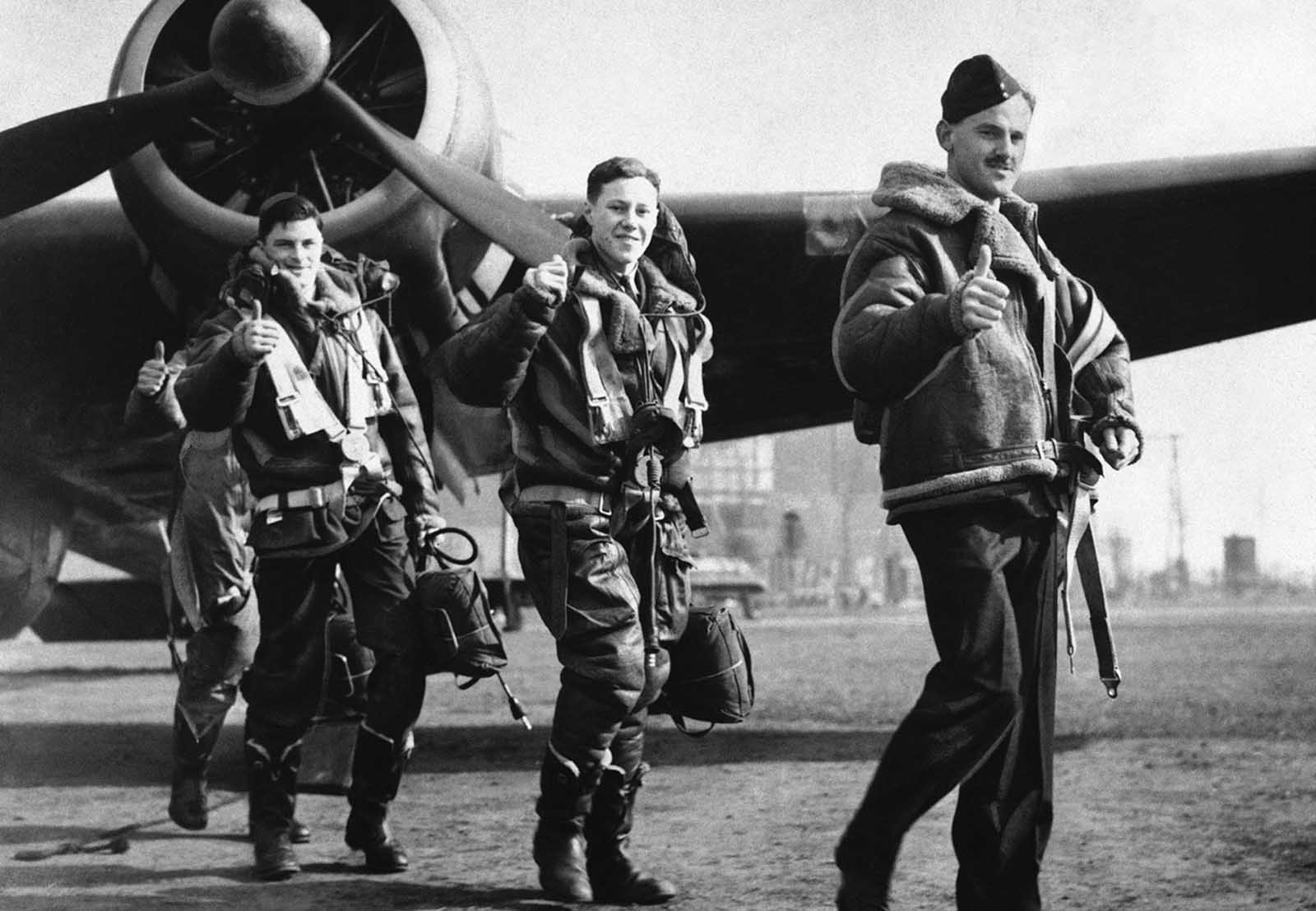
Members of a British Royal Air Force bombing squadron hold thumbs up on April 22, 1940, as they return to home base from an attack on German warships off Bergen, Norway.
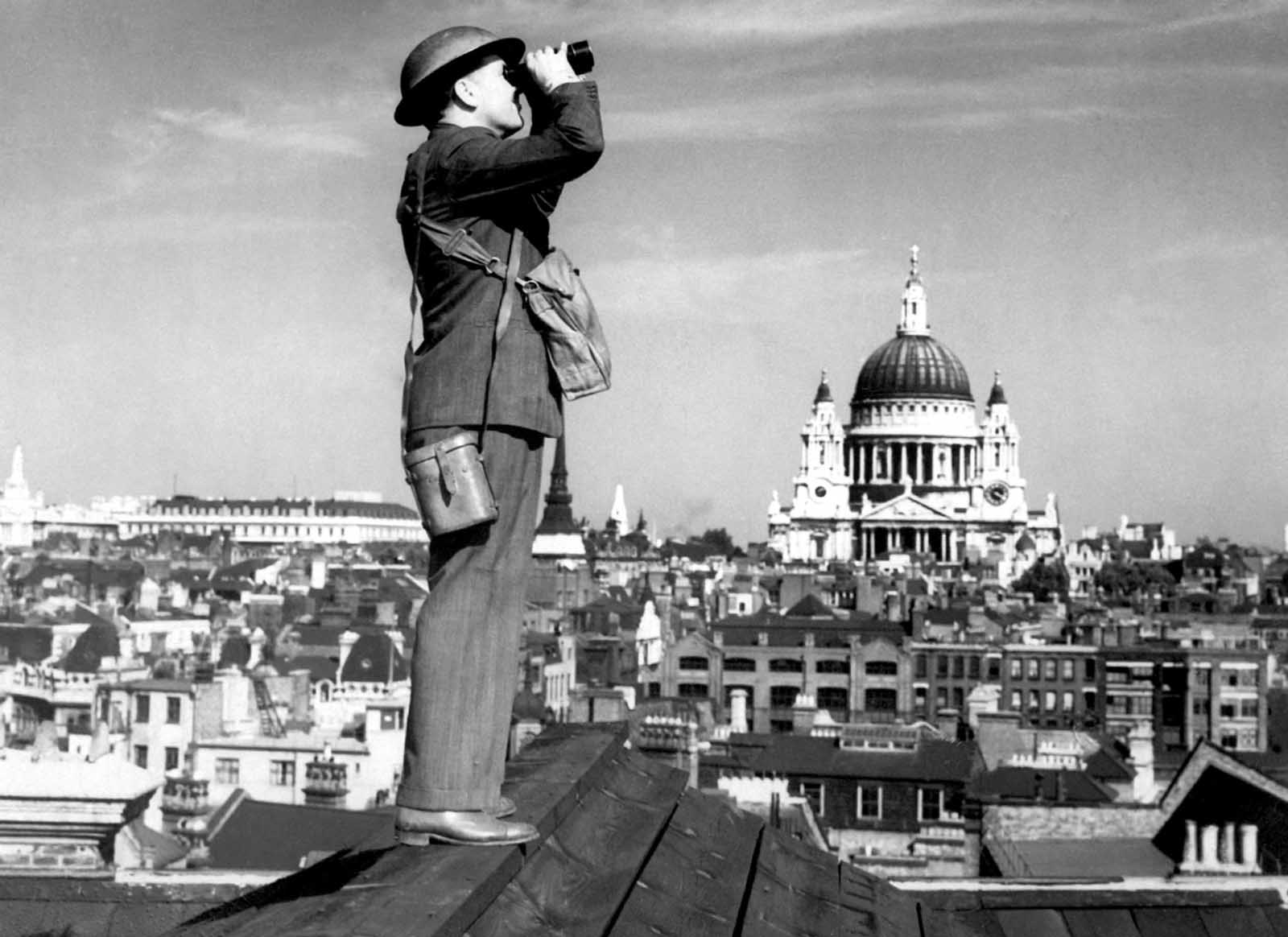
An aircraft spotter on the roof of a building in London, England, with St. Paul’s Cathedral in the background.
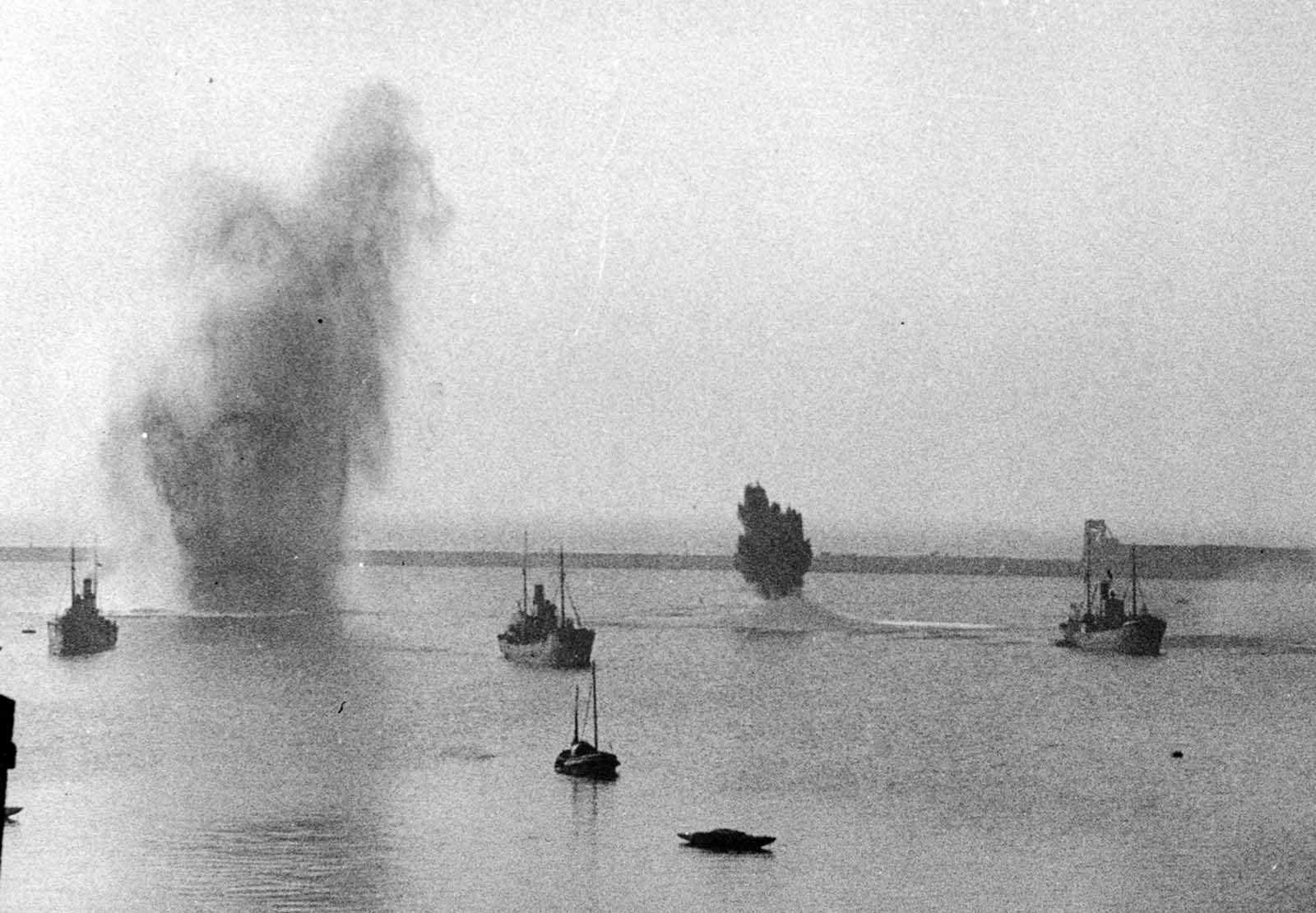
German bombs miss their targets and explode in the sea during an air raid on Dover, England, in July 1940.
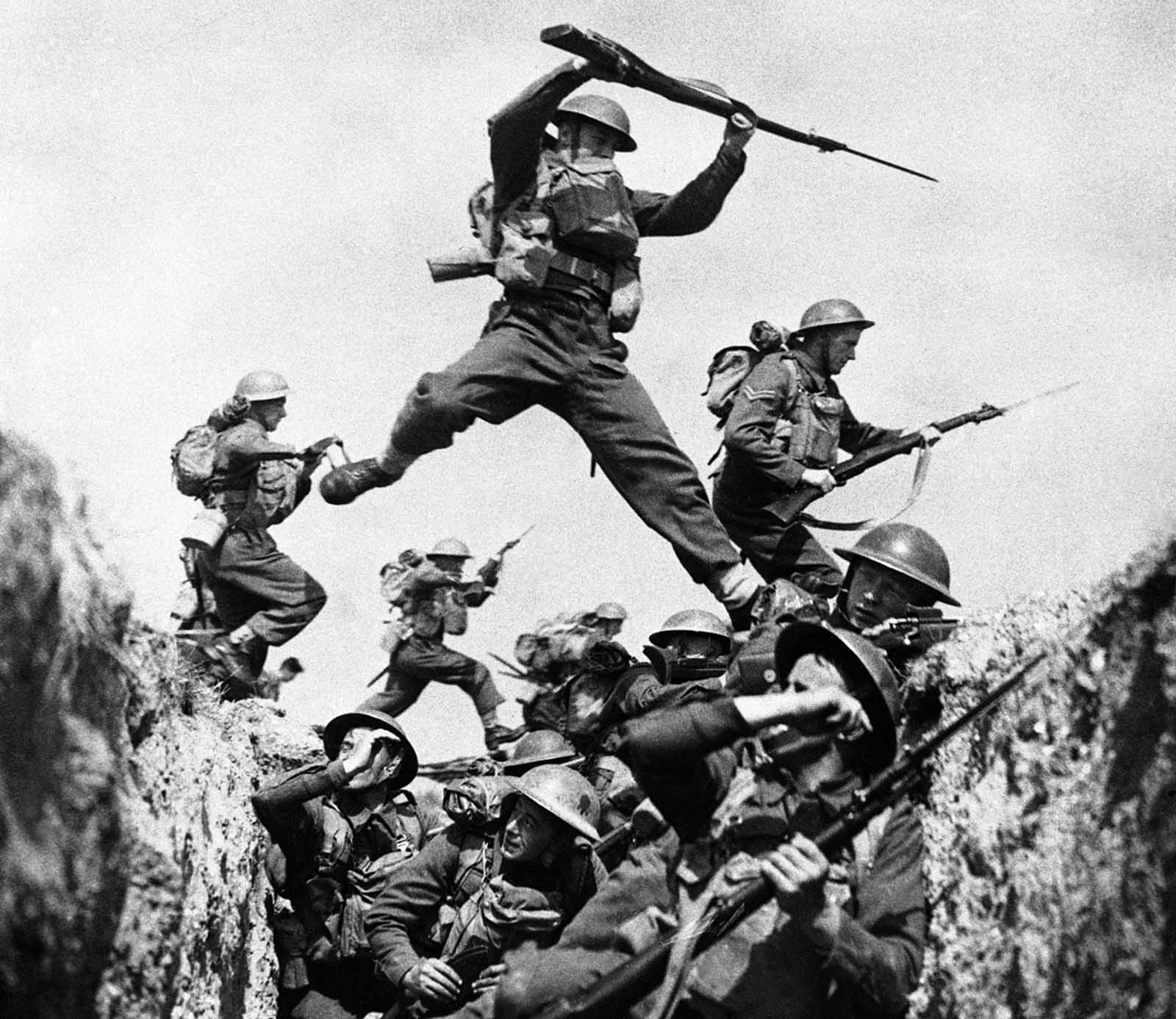
Members of the Black Watch, one of the famed Scottish regiments, undergo rough training in South Coast sector of England, in 1940. The men were training to be combat parachutists.

The Royal Irish Fusiliers of the British expeditionary forces come to the aid of French farmers whose horses have been commandeered by the French Army. A tank is hitched to a plow to help with the spring tilling of the soil on March 27, 1940.

Belgian women tearfully have goodbye to husbands and sons leaving for the front line as the threat of invasion hung heavily over their homeland, on May 11, 1940.

A formation of German Ju 87 Stuka dive bombers are flying over an unknown location, in this May 29, 1940 photo.
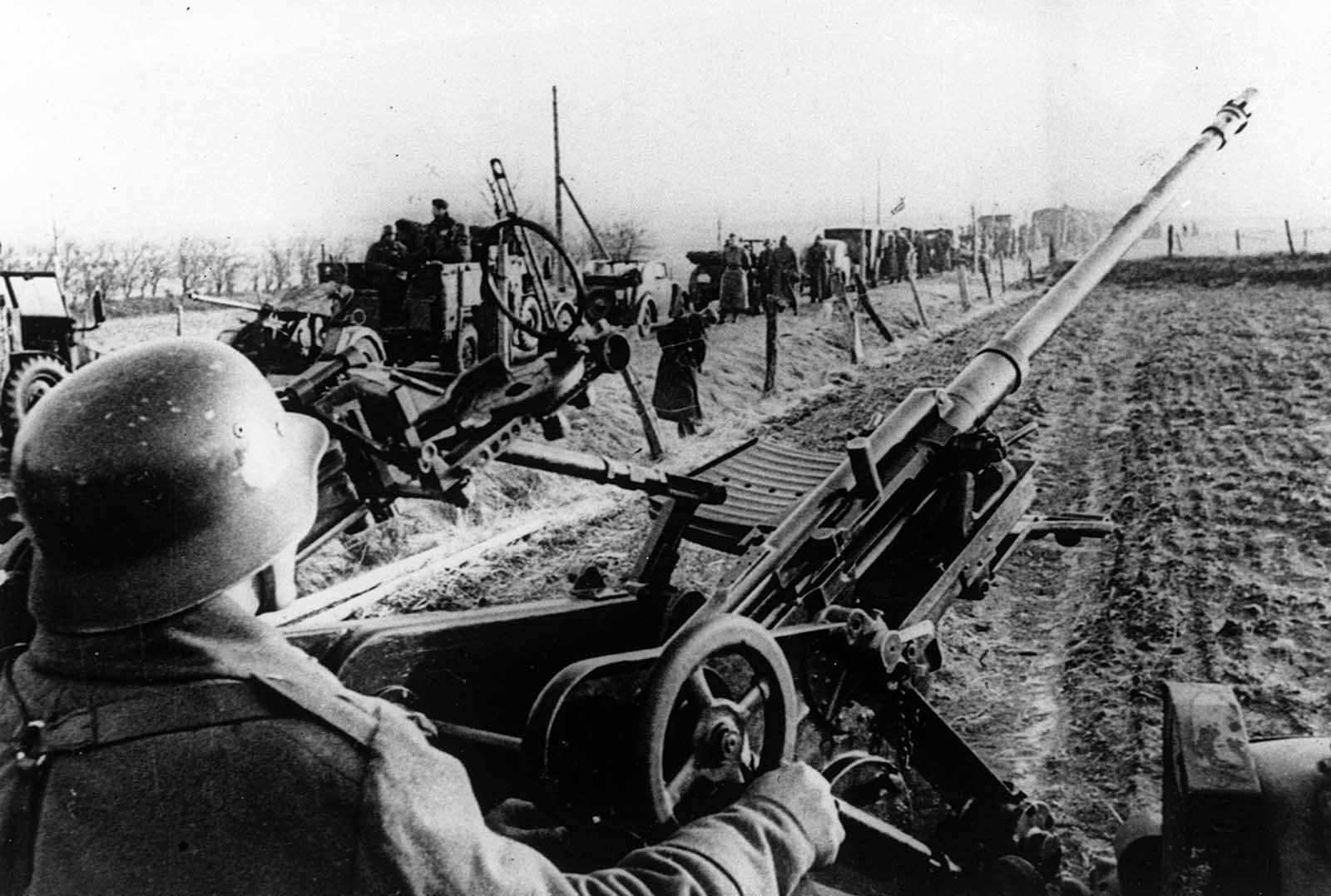
A German soldier operates his antiaircraft gun at an unknown location, in support of the German troops as they march into Danish territory, on April 9, 1940.

Reconnaissance squads head the German advance into Luxembourg, on May 10, 1940.

German parachute troops descending on Fort Eben Emael in Belgium, on May 30, 1940, part of a larger surprise attack.
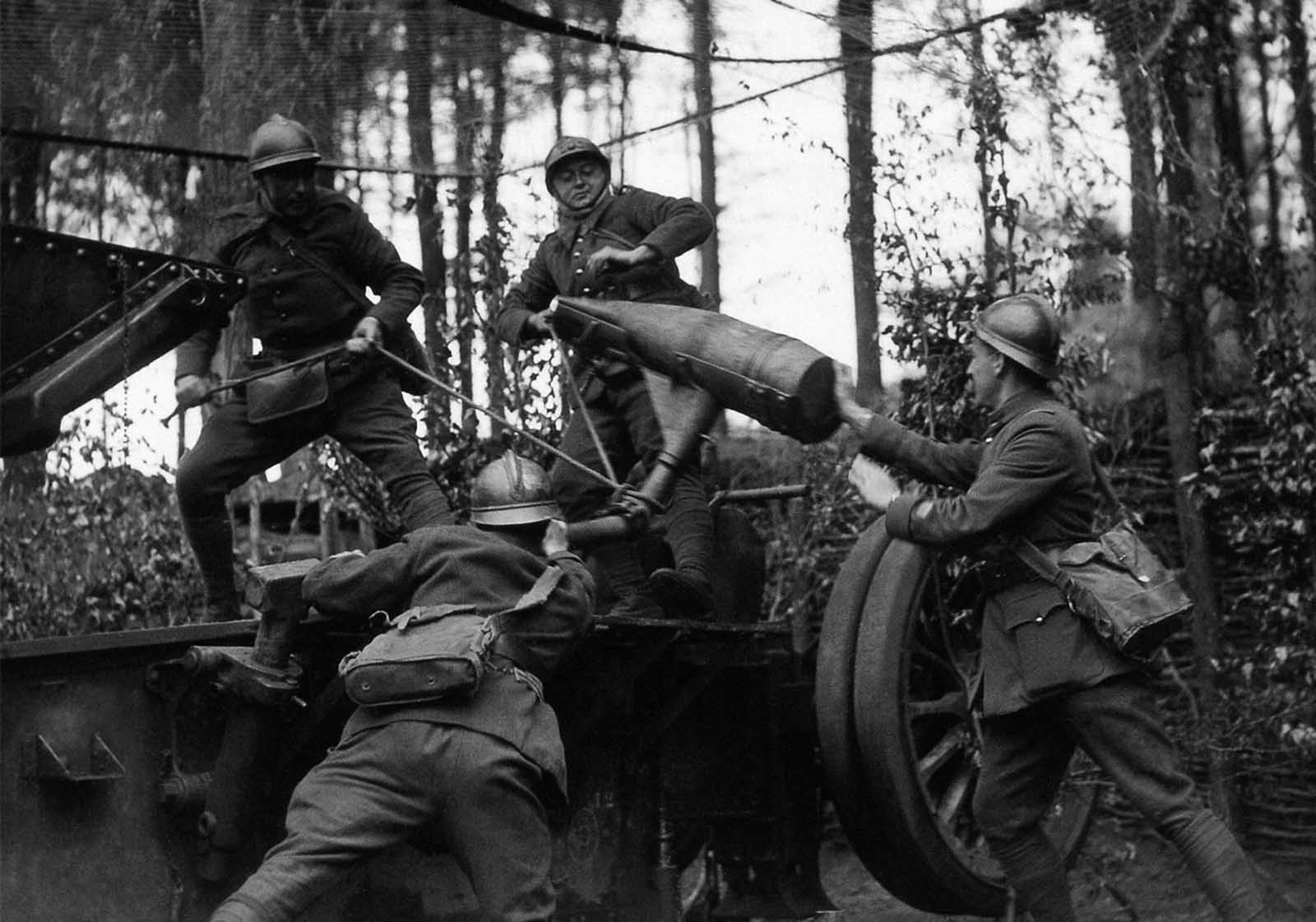
French soldiers load a piece of artillery in a wood somewhere in the Western Front on May 29, 1940. The shell will be fired into the Nazi-occupied sector of the soldiers’ homeland.

A formation of German Dornier Do 17Z light bombers, flying over France on June 21, 1940.

German parachute troops man a machine gun post in the Netherlands, on June 2, 1940. This photo came from a camera found on German parachute troops who were taken prisoner.
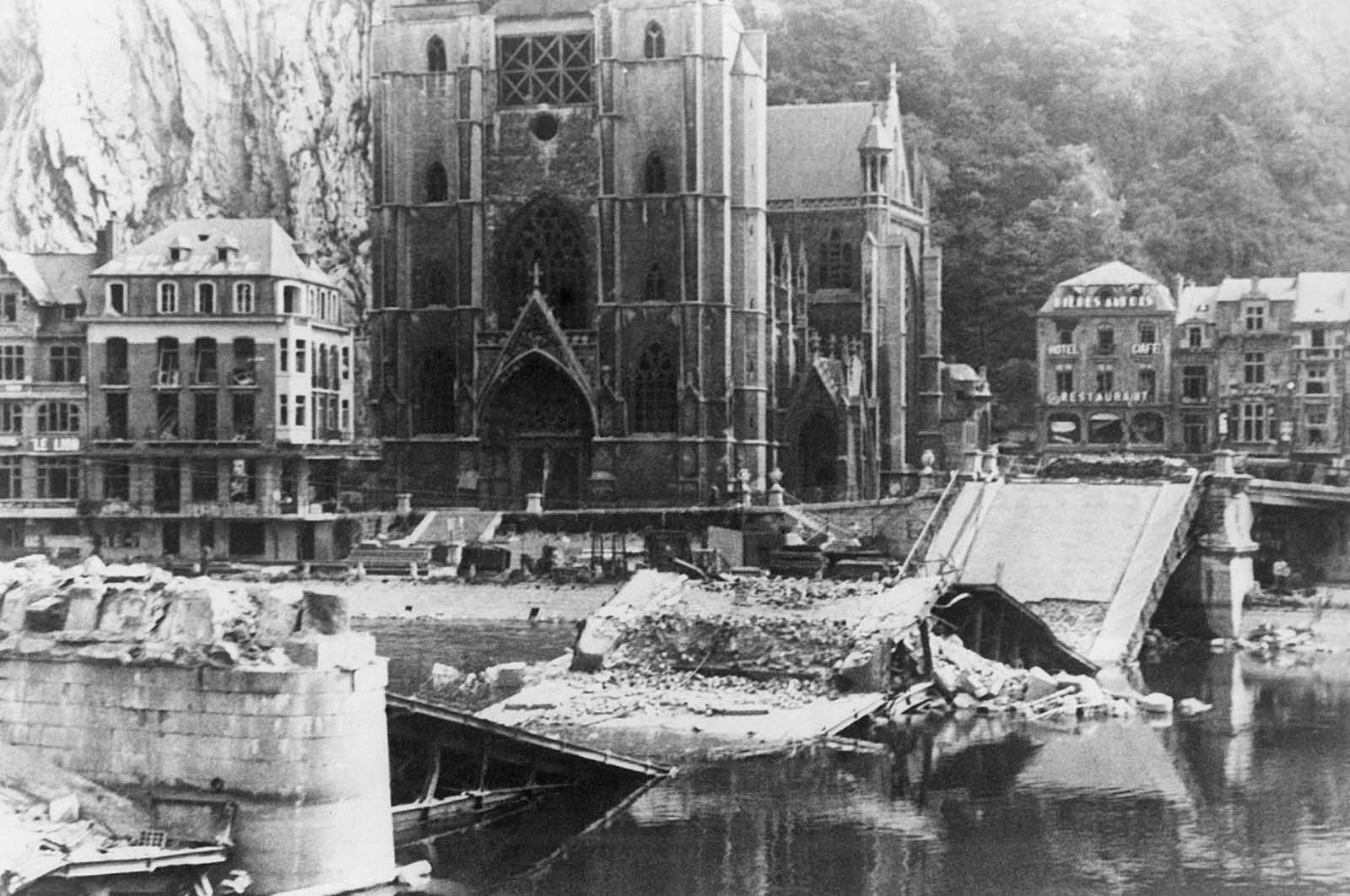
Belgians blasted this bridge across the Meuse River in the town of Dinant, Belgium, but shortly, a wooden bridge built by German sappers was standing next to the ruins, on June 20, 1940.

A woman, fleeing from her home with the few possessions she can carry, takes cover behind a tree by the roadside, somewhere in Belgium, on May 18, 1940, during an aerial attack by Nazi planes. Her bicycle, with her belongings tied to it, rests against the tree, to which she clings for protection.
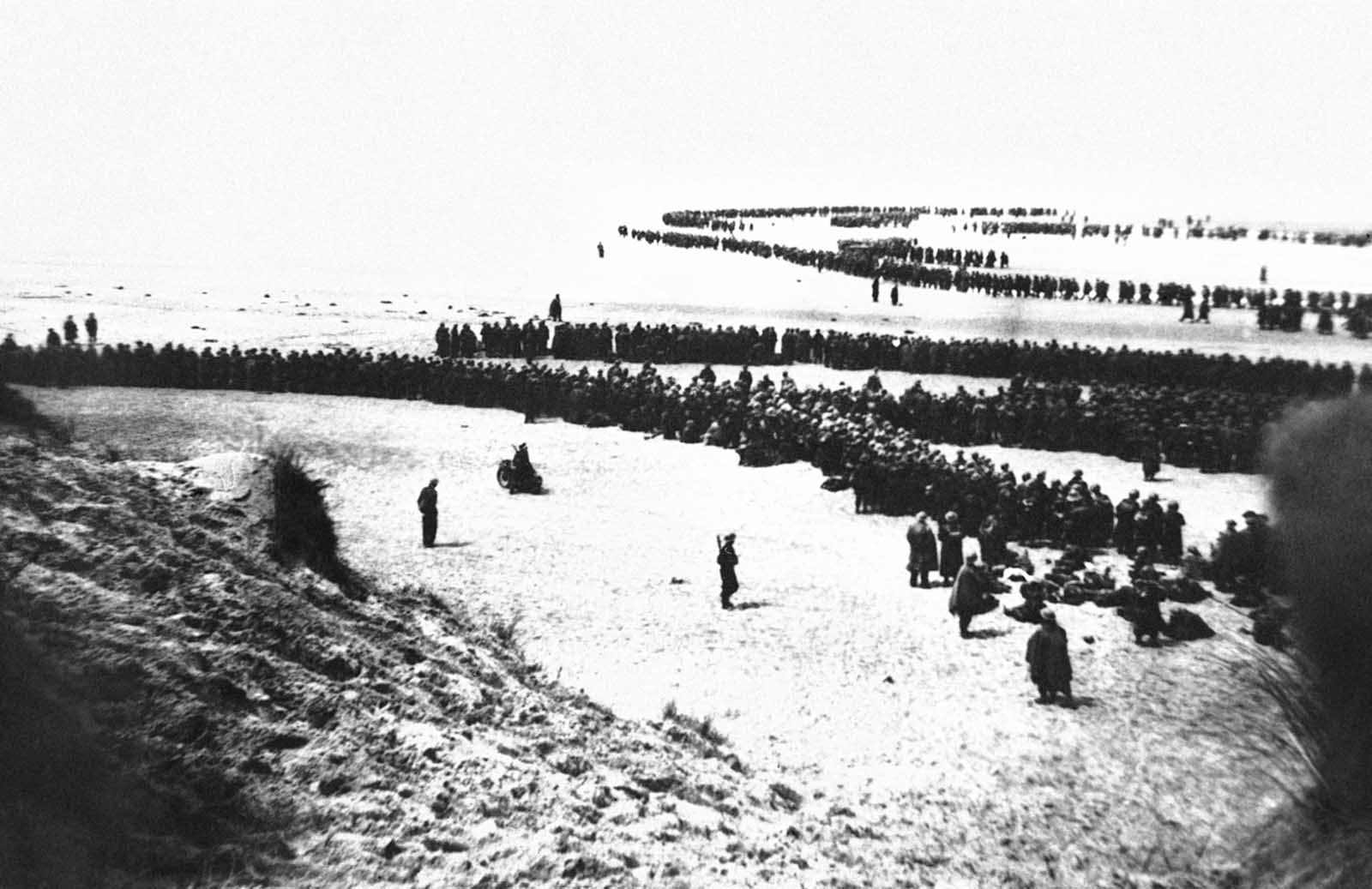
Hundreds of thousands of British and French troops who had fled advancing German forces massed on the beach of Dunkirk, France, on June 4, 1940, awaiting ships to carry them to England.
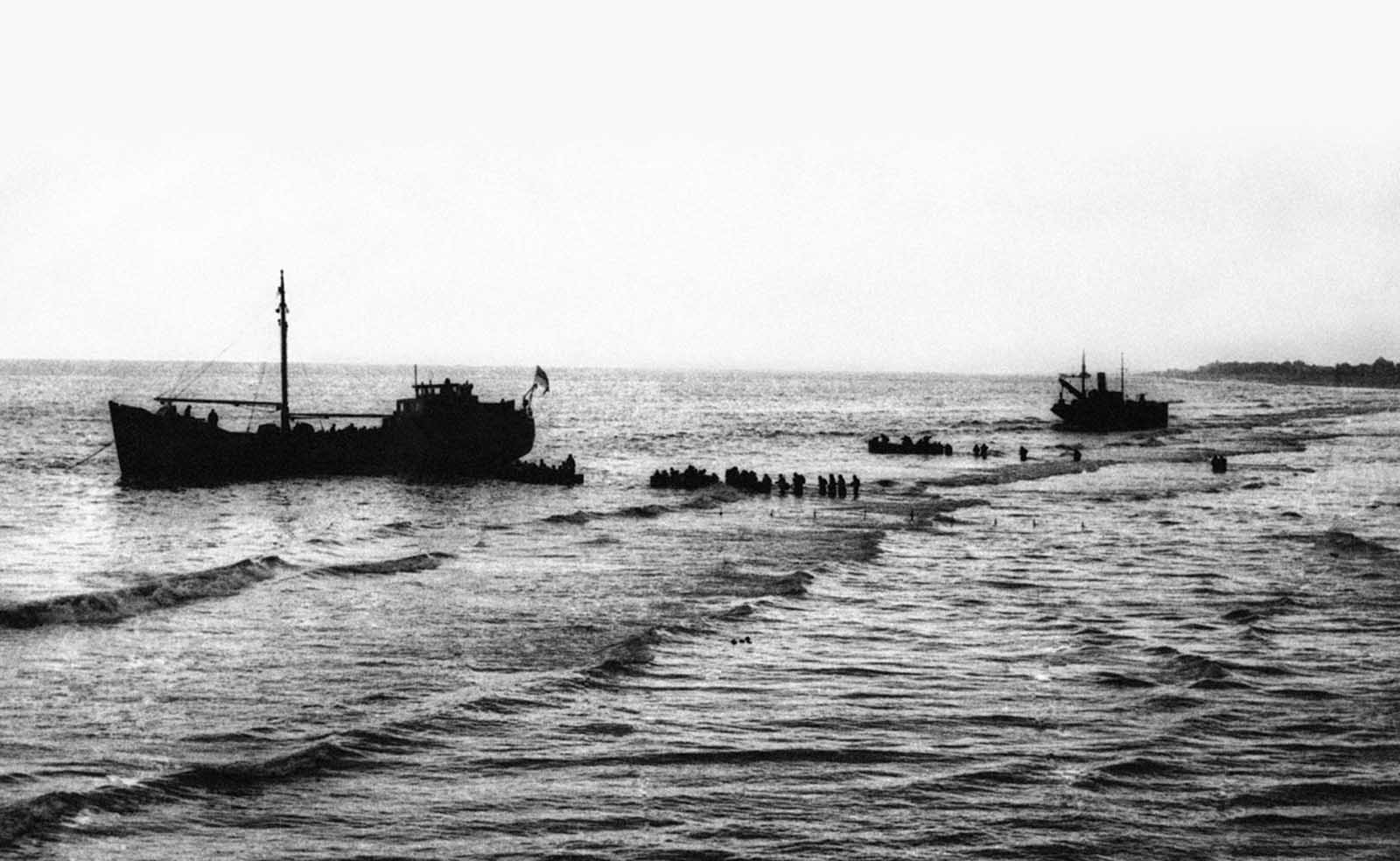
British and French troops wade through shallow water along the beach at Dunkirk, France on June 13, 1940 toward small rescue craft that will bring them to England. Some 700 private vessels joined dozens of military craft to ferry the men across the channel.

Men of the British Expeditionary Force safely arrive home after their fight in Flanders on June 6, 1940. More than 330,000 soldiers were rescued from Dunkirk in the mission code-named Operation Dynamo.
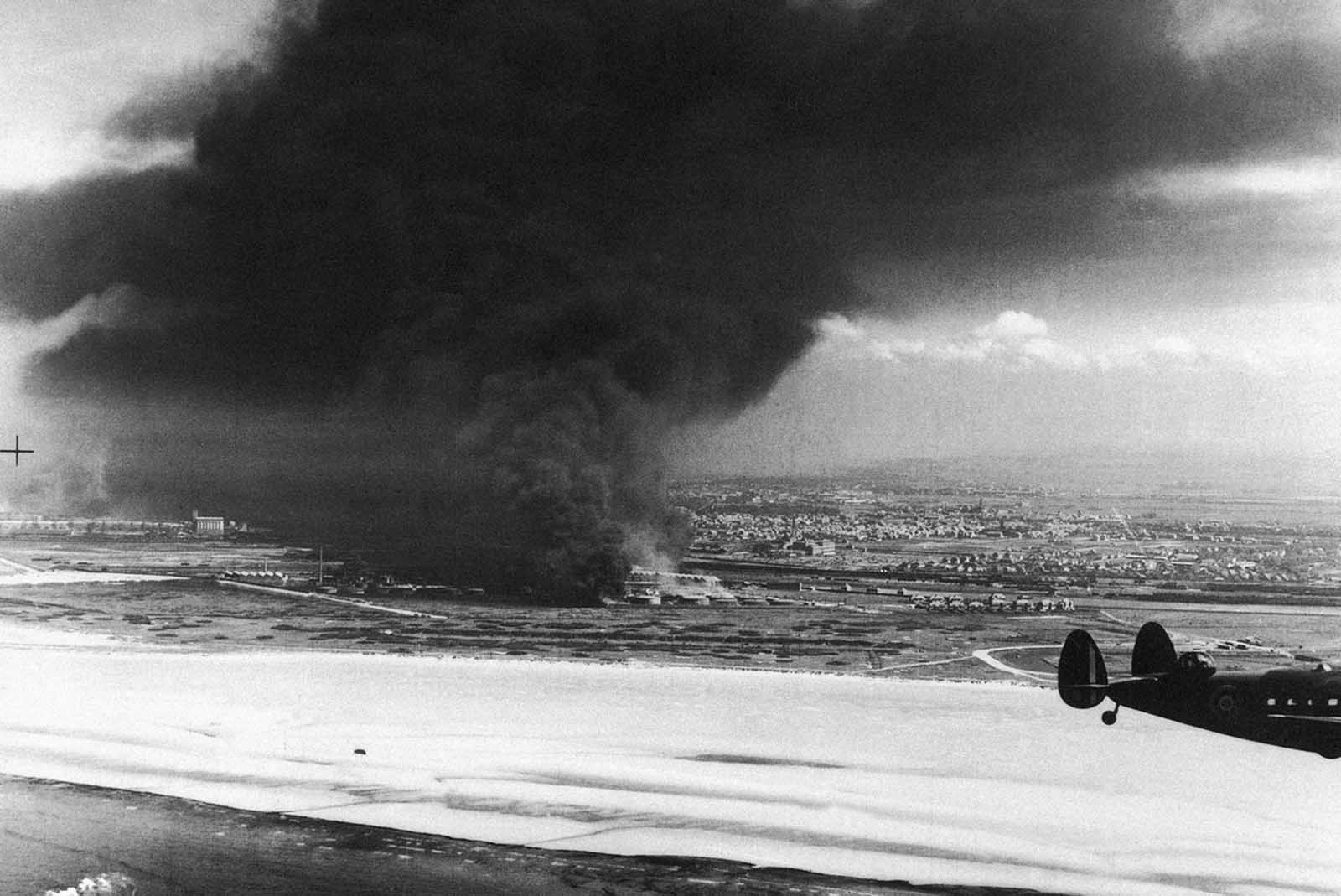
Oil tanks burn in Dunkirk, France, on June 5, 1940. The aircraft in the right foreground is an RAF Coastal Command Lockheed Hudson on patrol.
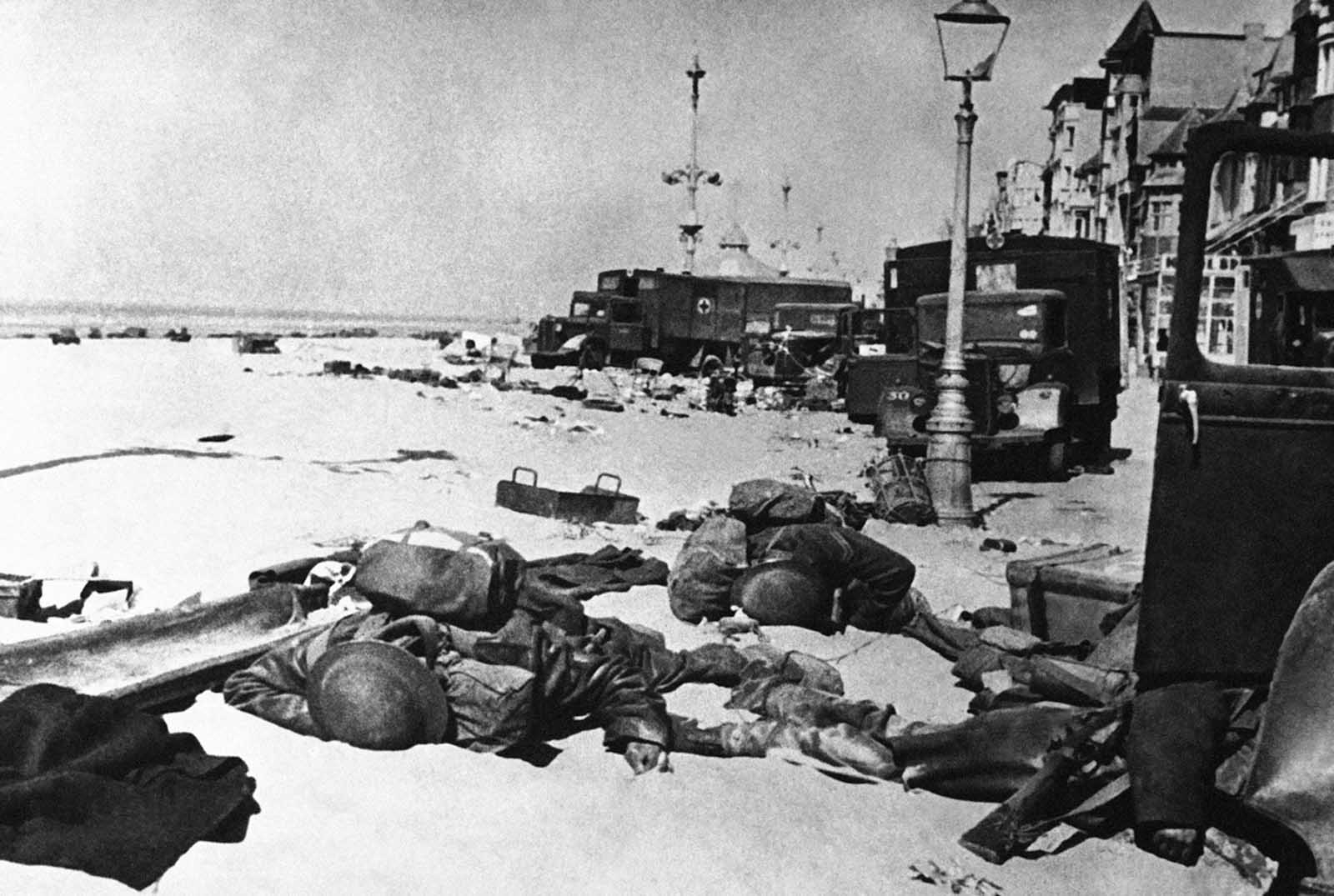
Aftermath of the British retreat in Flanders, Belgium on July 31, 1940. English soldiers lie dead beside their vehicles.
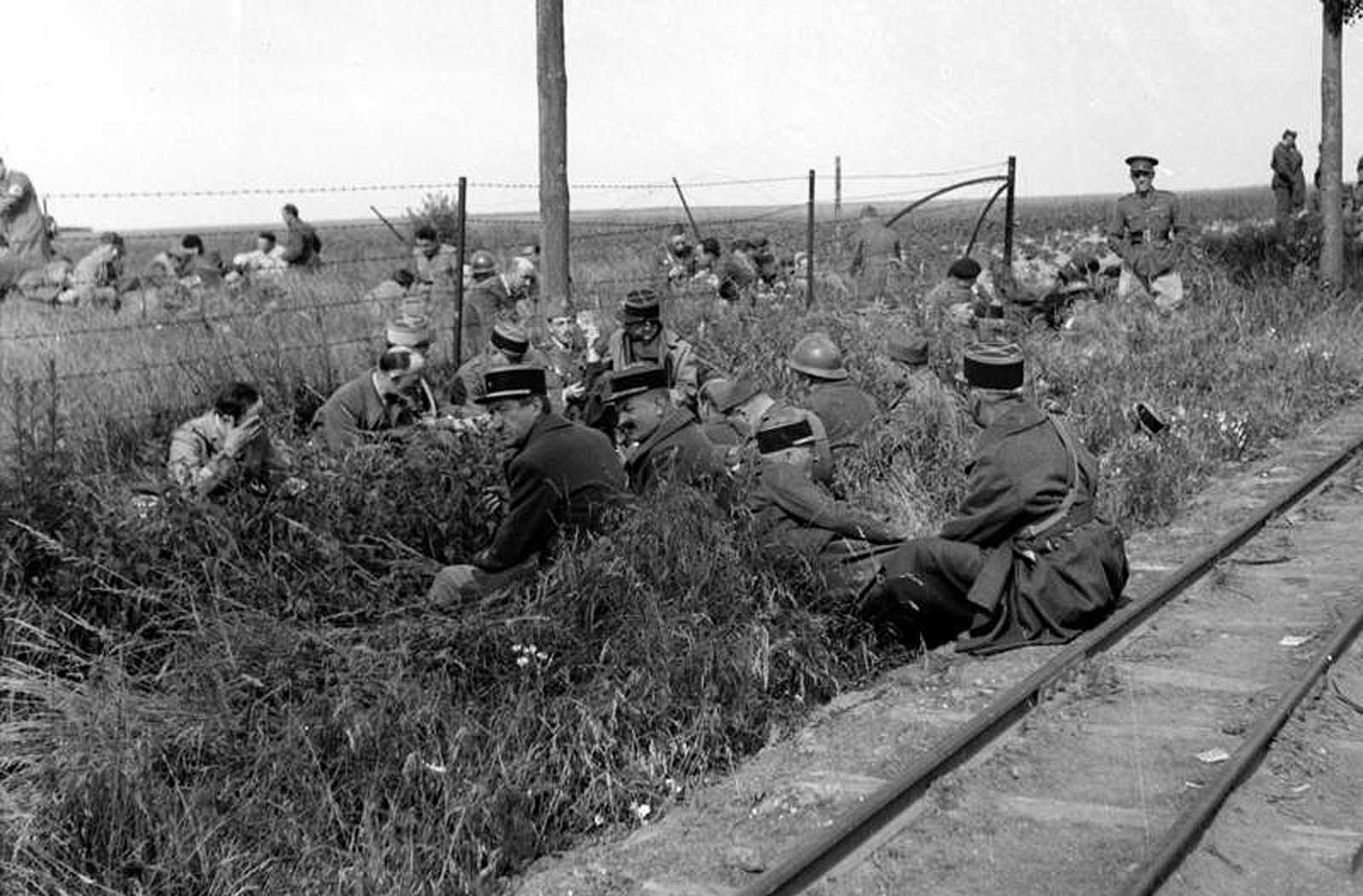
English and French prisoners of war sit near railroad tracks somewhere in Belgium in 1940.
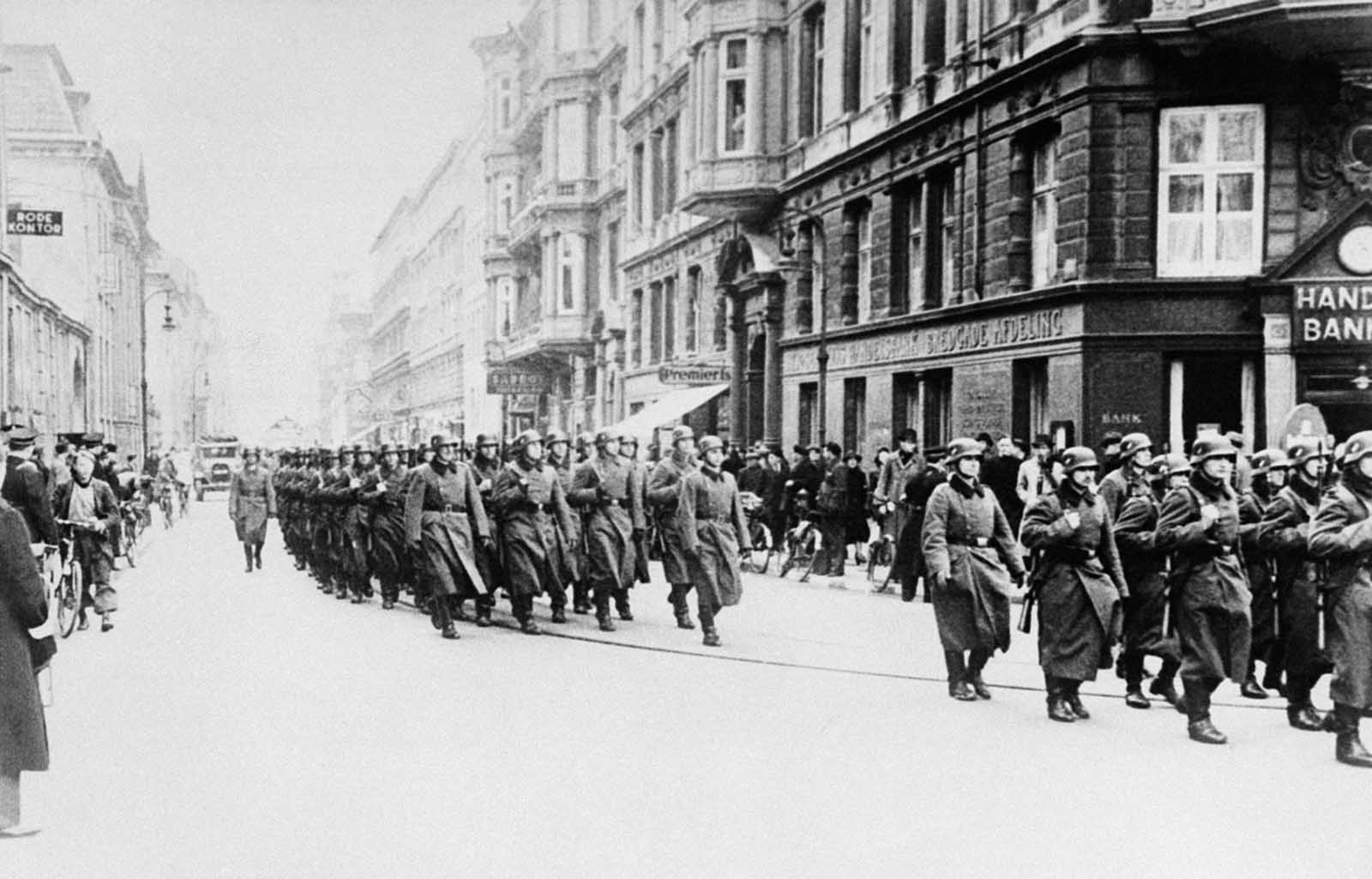
German troops parade in Copenhagen, Denmark on April 20, 1940 to celebrate Hitler’s birthday.
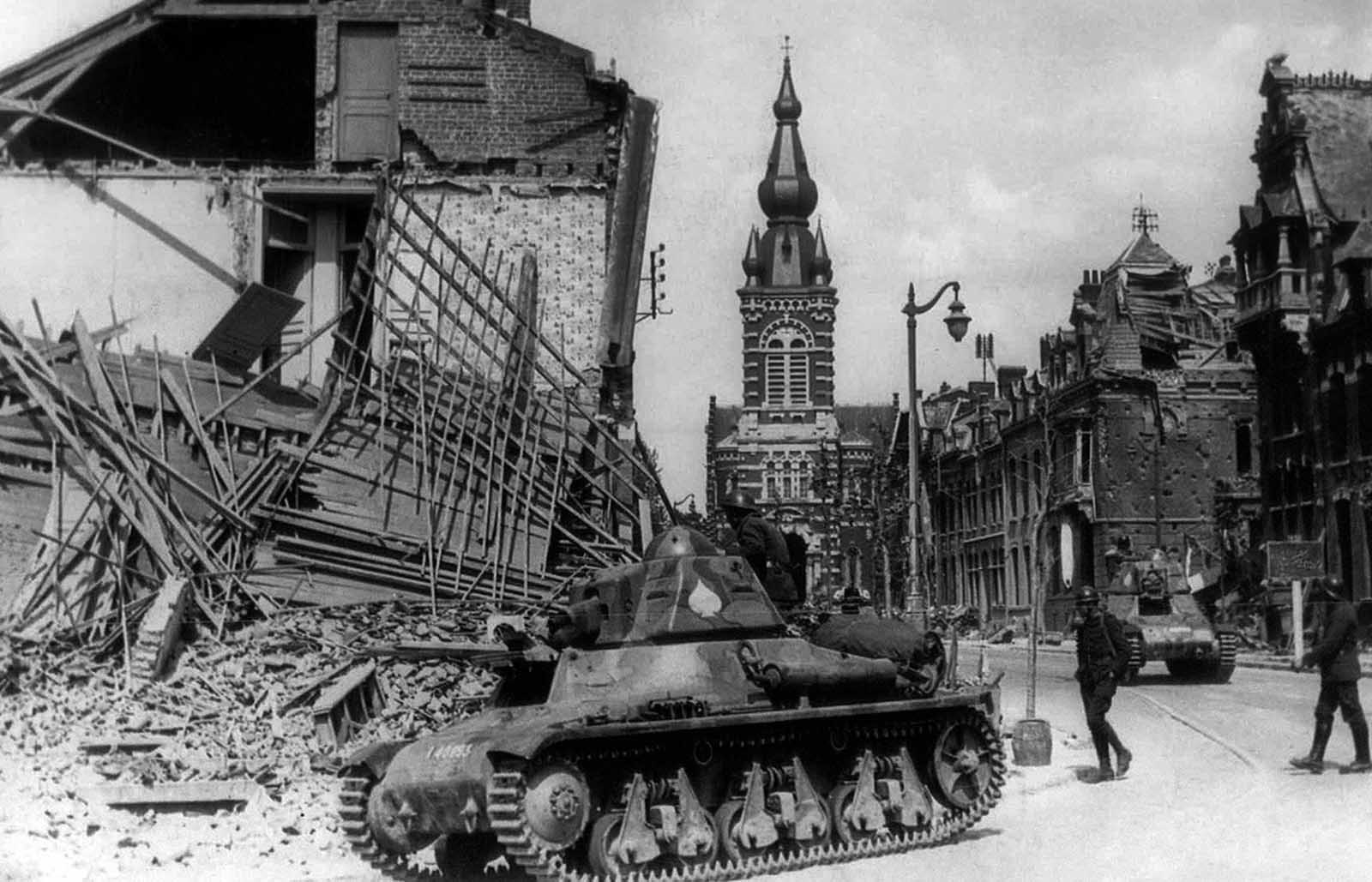
French tanks pass through a bombarded French town on their way to the front line in France, on May 25, 1940.
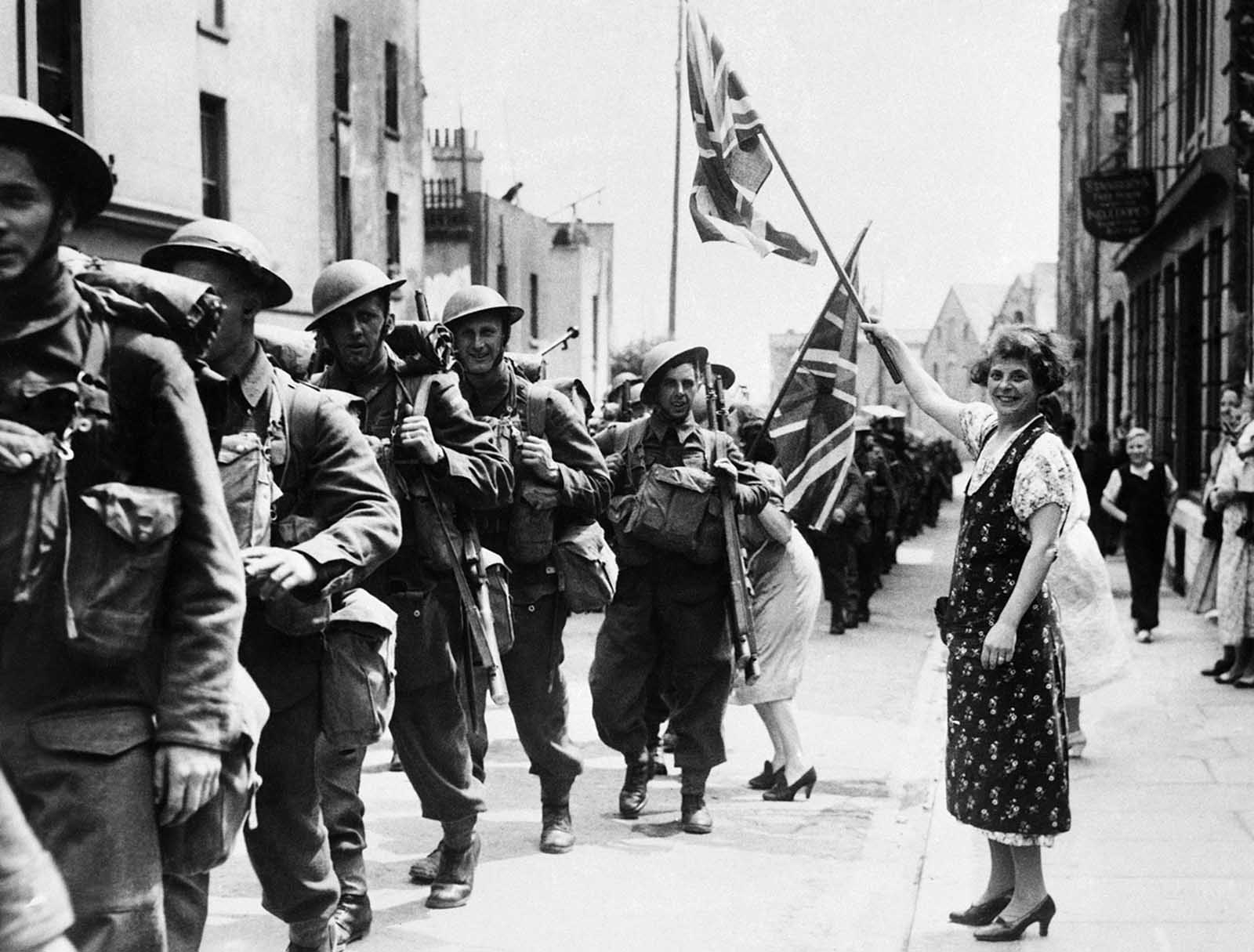
Women waving Union Jacks greet passing soldiers, all Canadians, as they march from the docks after disembarking in France on June 18, 1940.
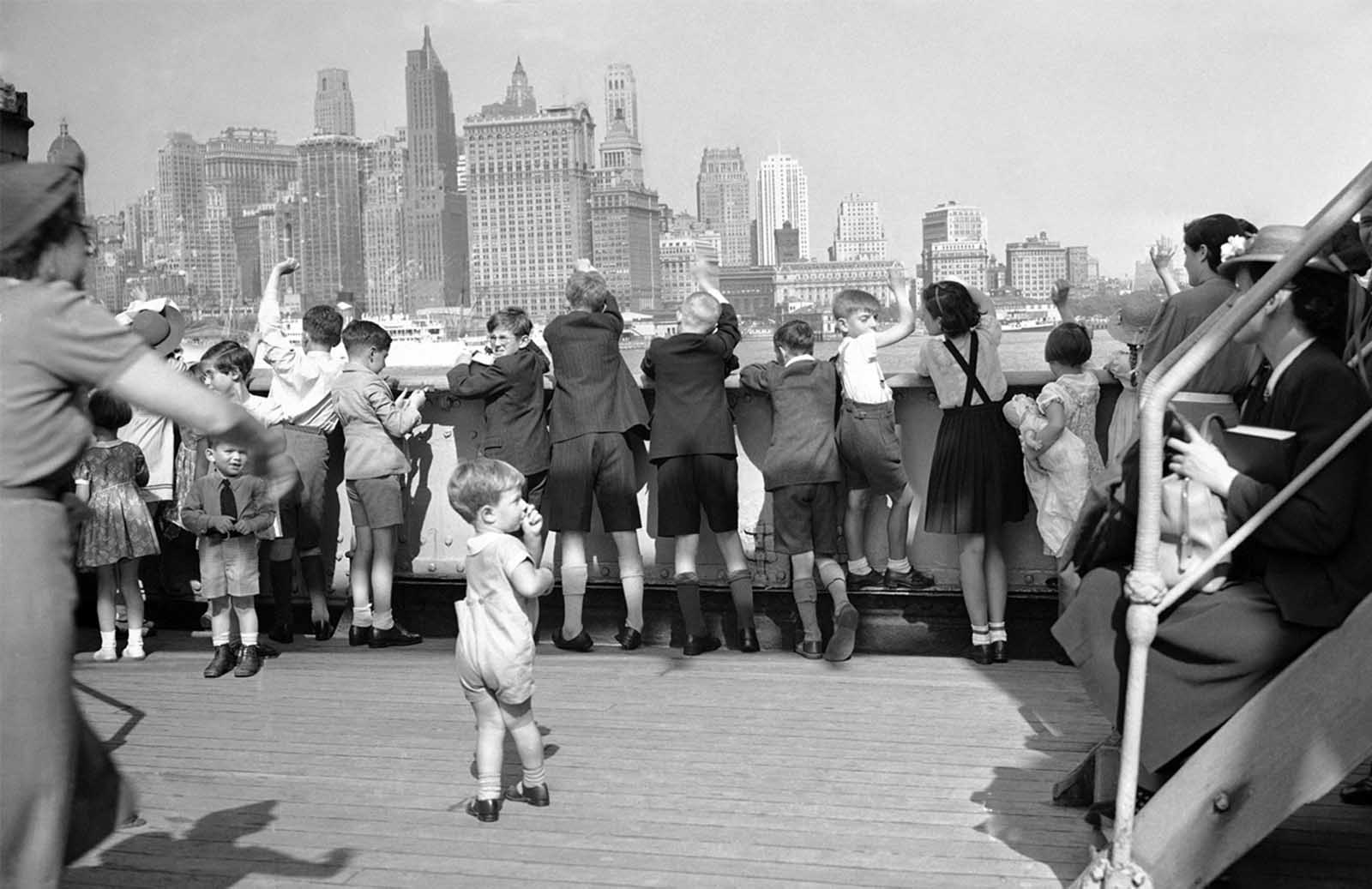
Some of the 350 refugee British children who arrived in New York City on July 8, 1940, aboard the British liner Samaria. They were the first large contingent of English children sent from the isles to be free of the impending Nazi invasion.
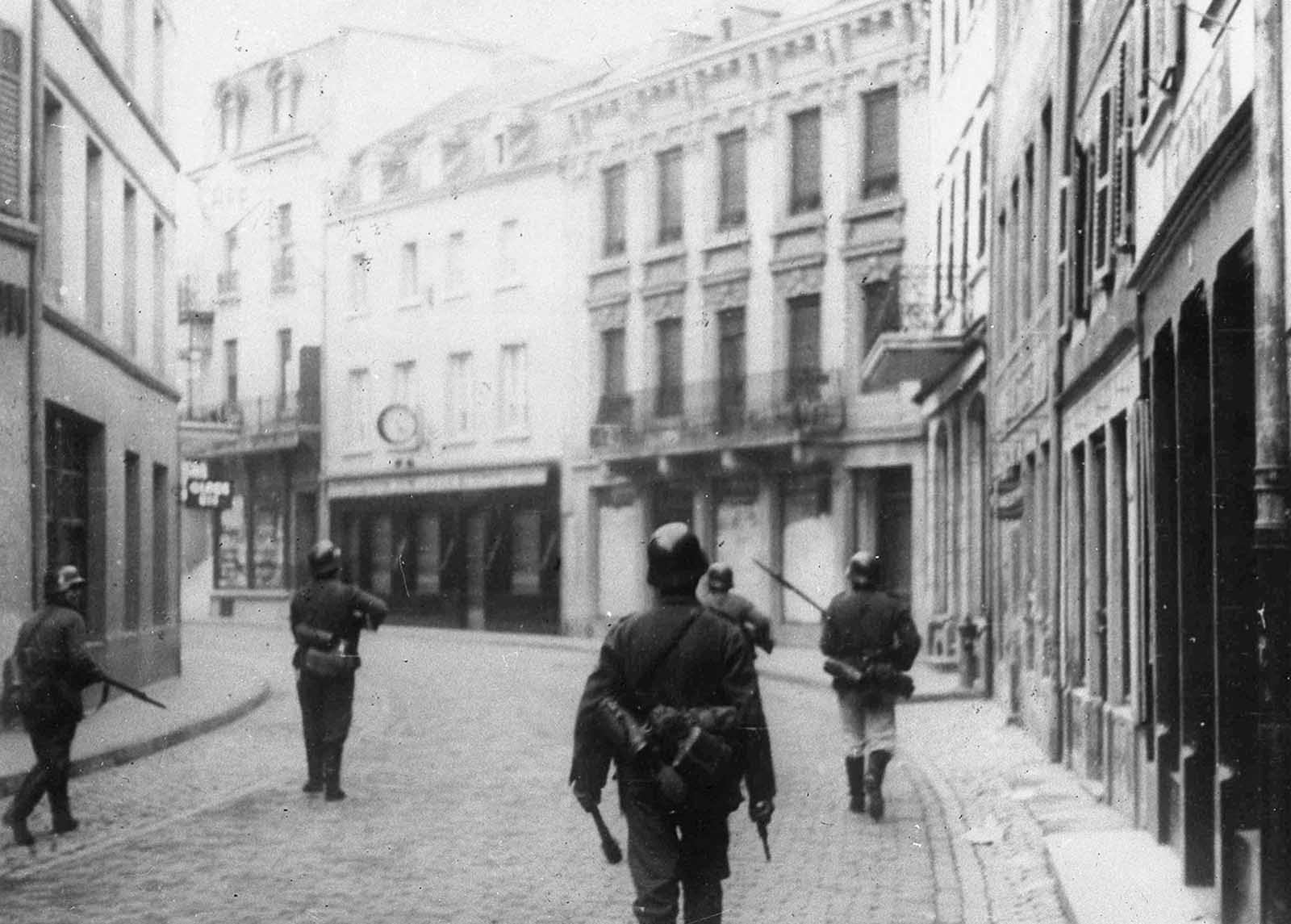
German troops walk down a deserted street in Luxembourg, on May 21, 1940, with rifles, pistols and grenades ready to protect themselves.
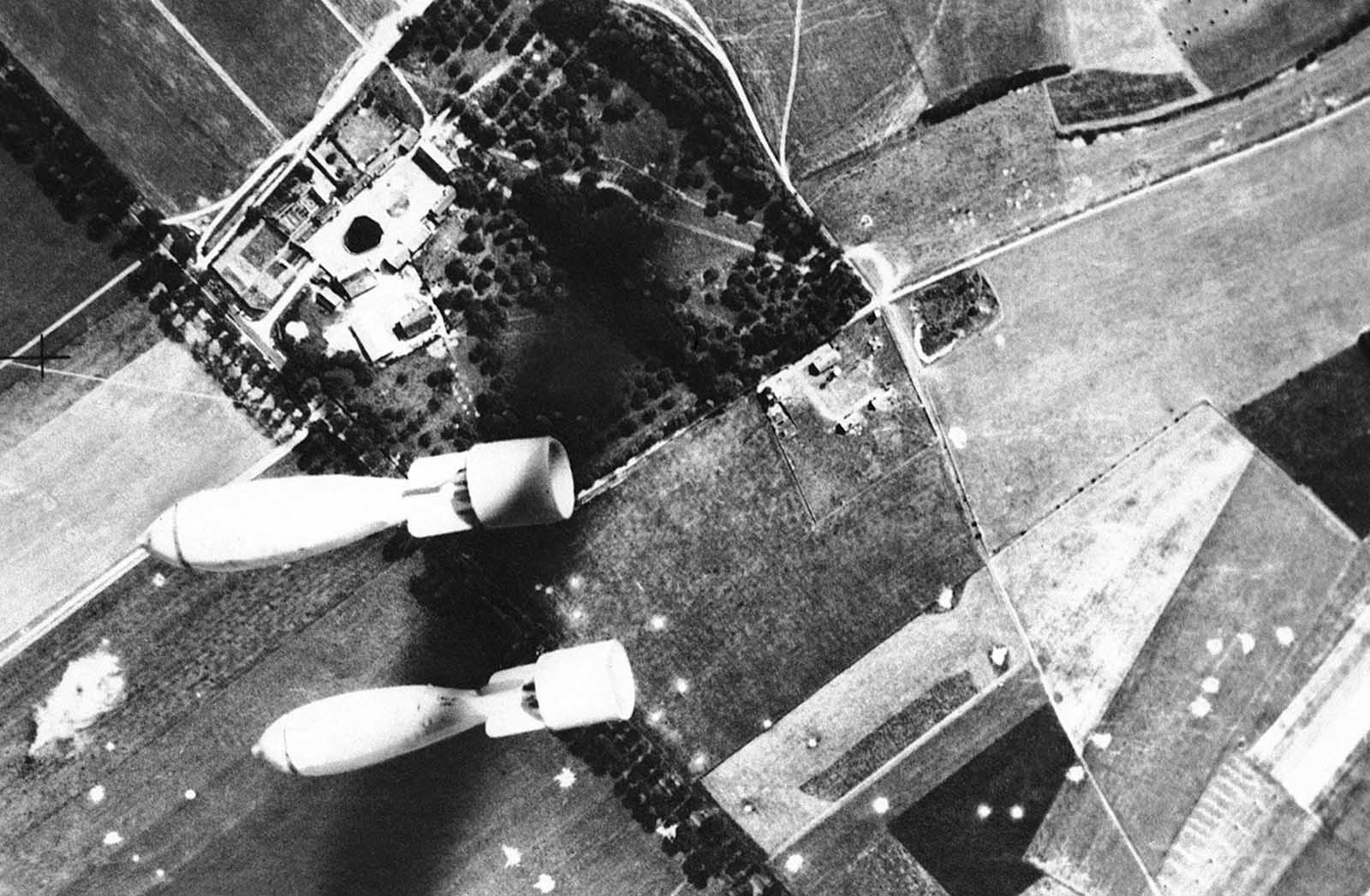
Bombs let loose by the Royal Air Force during a raid on Abbeville Aerodrome, now held by Germans, in France, on July 20, 1940.
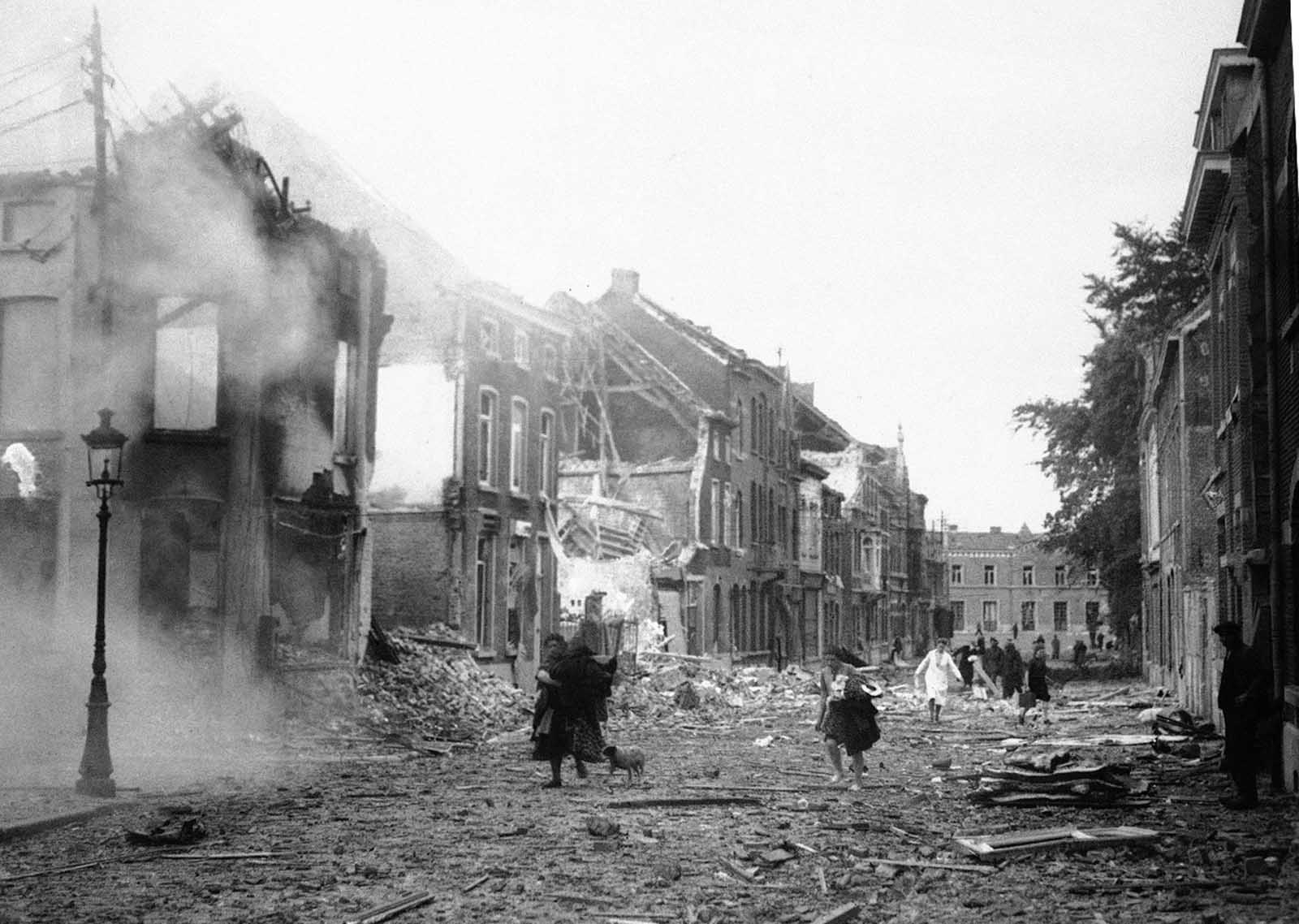
Refugees leave their ruined town in Belgium, after it had been bombed by the Germans, carrying what little of their personal belongings they managed to salvage, on May 19, 1940.
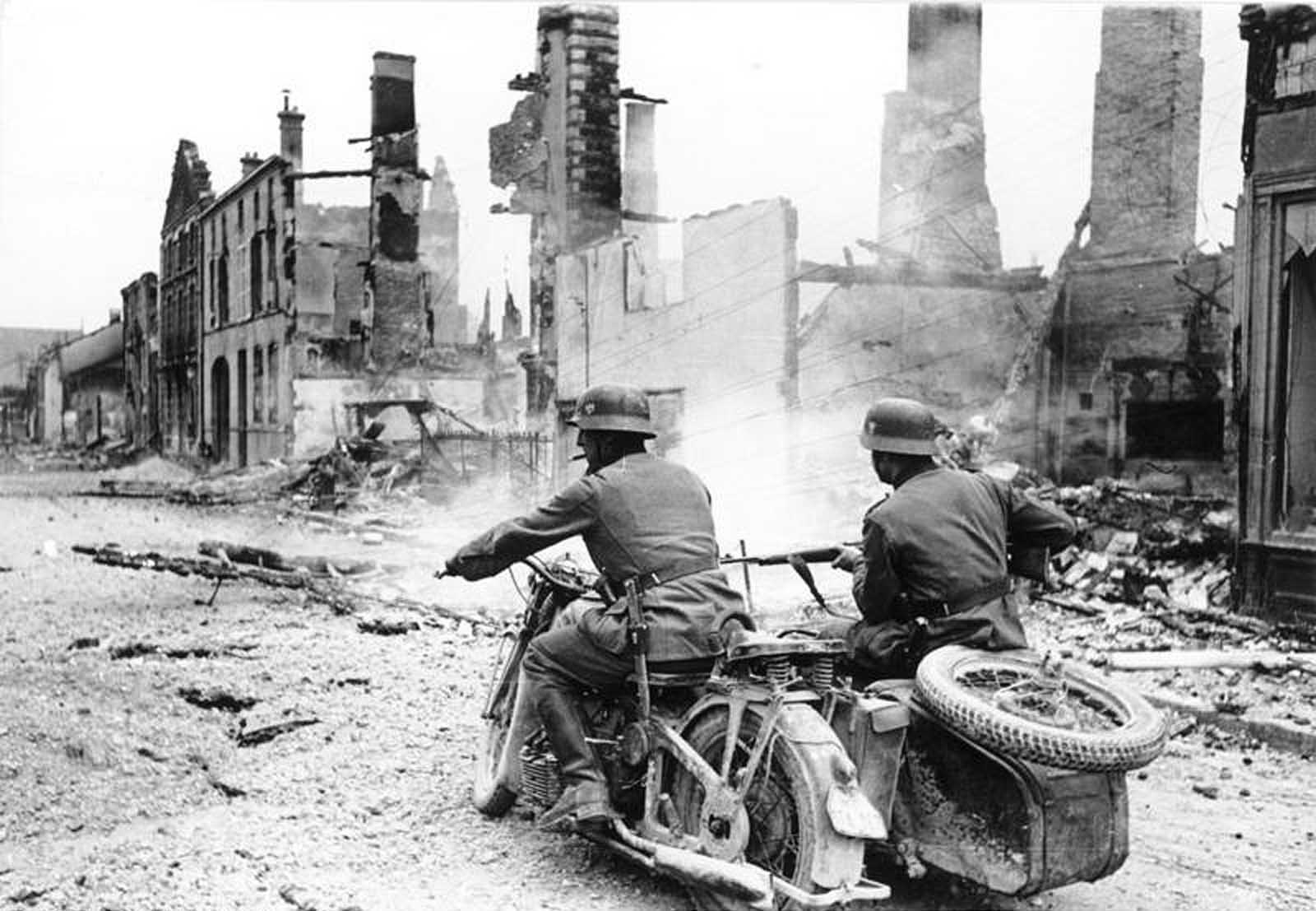
Nazi motorcyclists pass through a destroyed town in France in 1940.
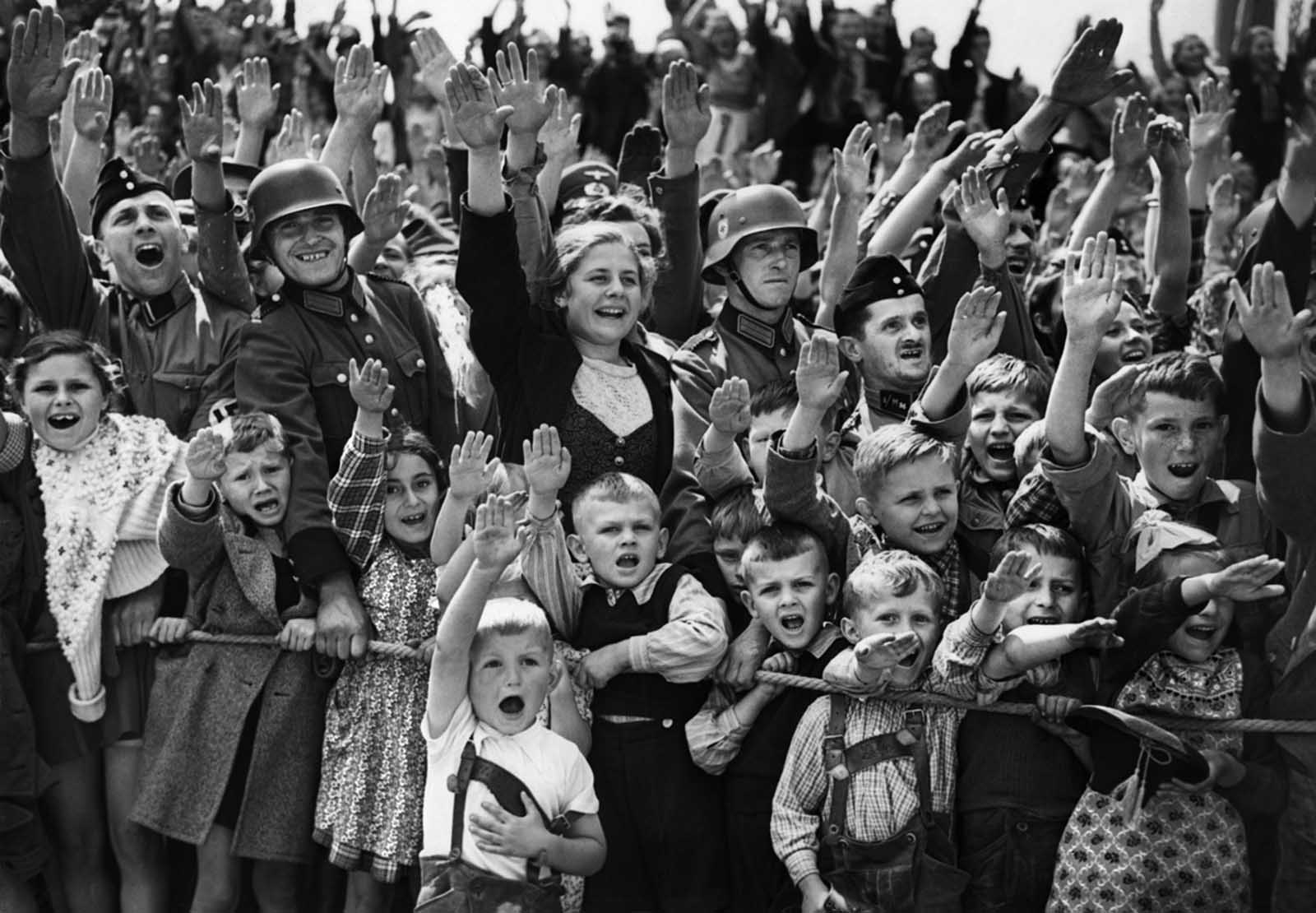
A crowd of women, children and soldiers of the German Wehrmacht give the Nazi salute on June 19, 1940, at an unknown location in Germany.
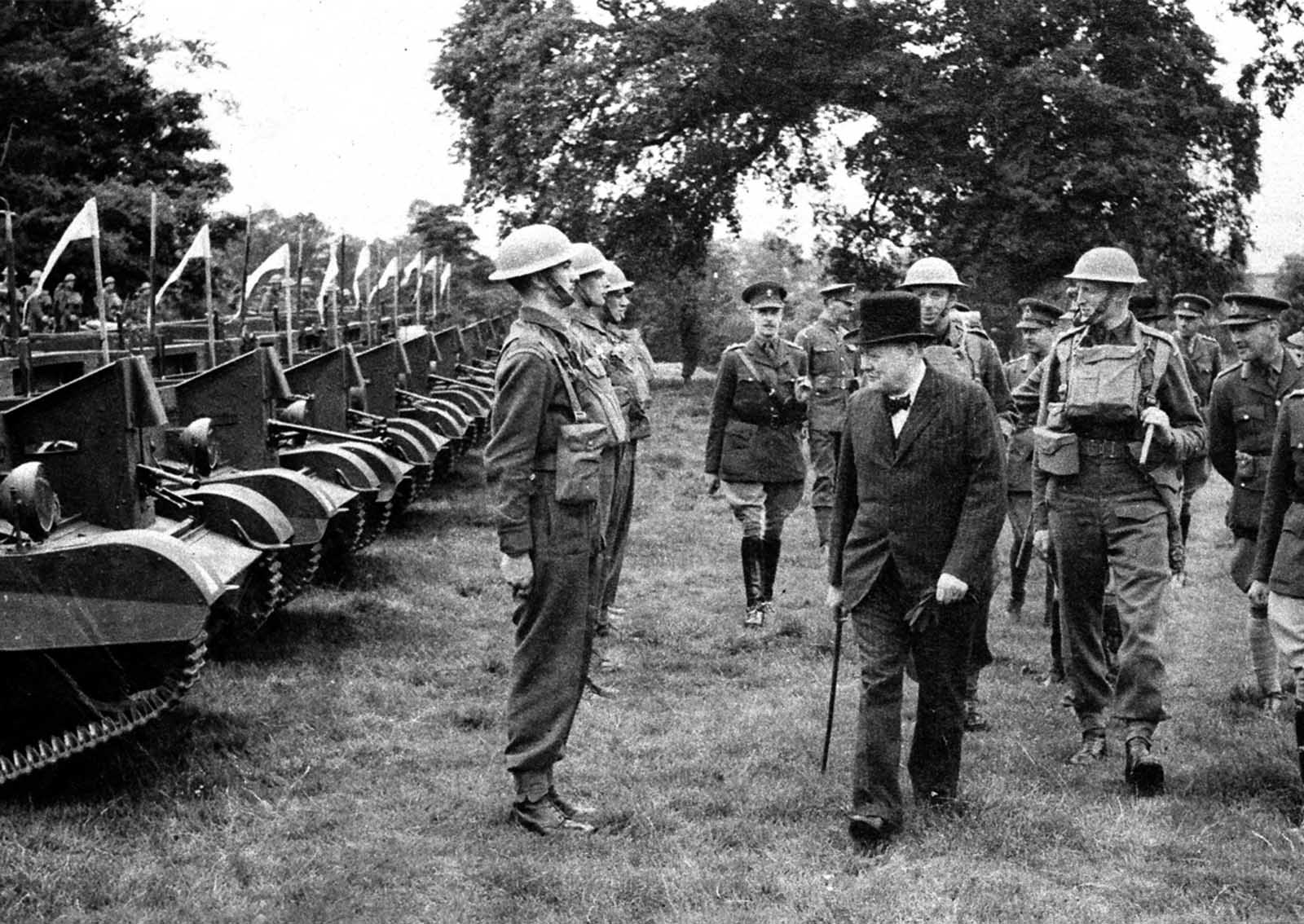
British Prime Minister Winston Churchill inspects Britain’s Grenadier guards standing at attention in front of Light Bren gun armored units in July, 1940.
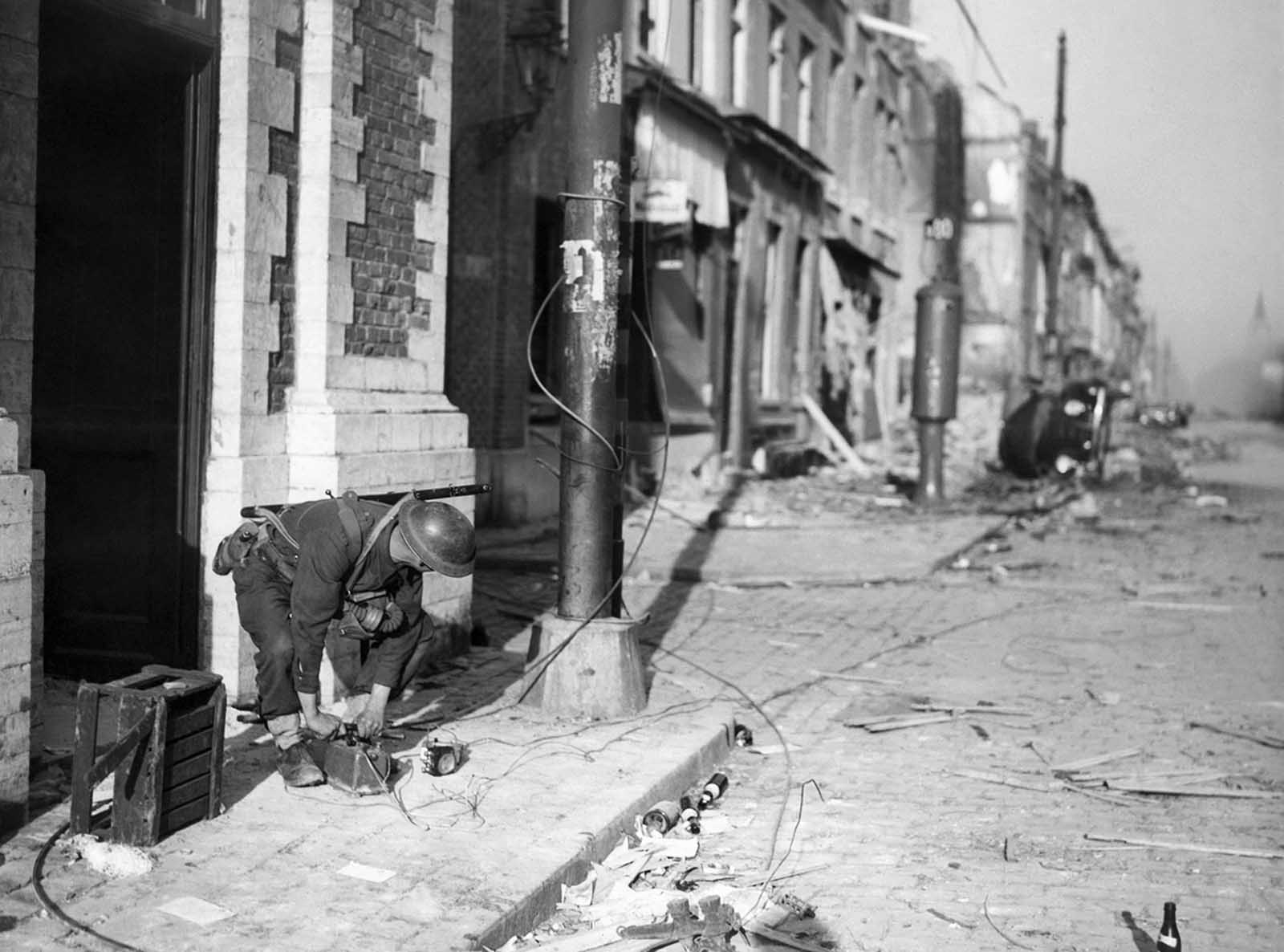
An allied soldier thrusts the plunger of an explosive mechanism that will blast a bridge to delay the Nazi advance, in the Leuven region of Belgium, on June 1, 1940, before this area fell to the Germans.

A tandem bicycle carries a whole Belgian family of four with some of their belongings strapped to their backs, as they flee from the advancing Nazis into France, on June 14, 1940.
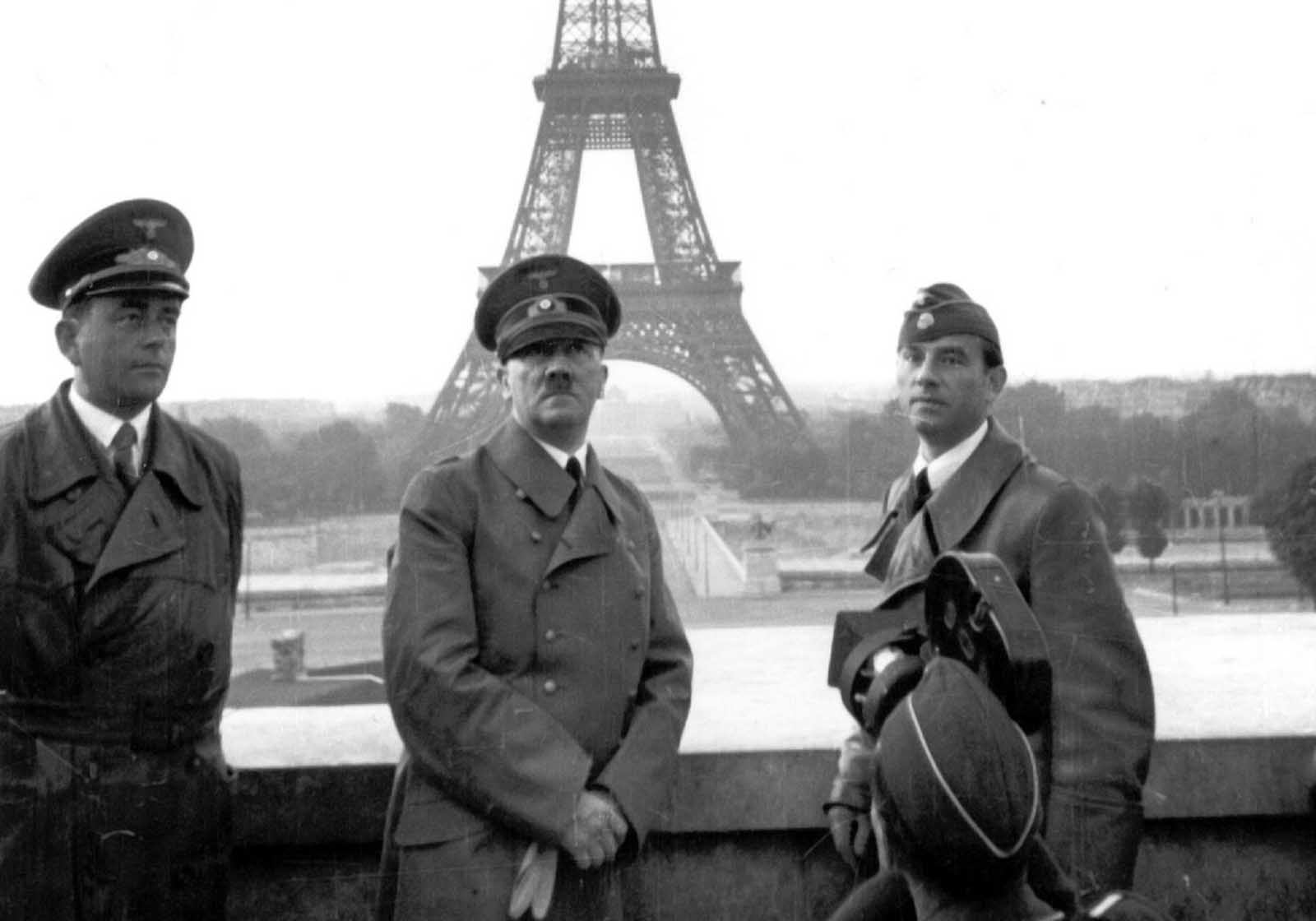
Adolf Hitler poses in Paris with the Eiffel Tower in the background, one day after the formal capitulation of France, on June 23, 1940. He is accompanied by Albert Speer, German Reichsminister of armaments and Hitler’s chief architect, left, and Arno Breker, professor of visual arts in Berlin and Hitler’s favorite sculptor, right. An unknown cameraman seen in the foreground is filming the event. Photo provided by the German War Department.
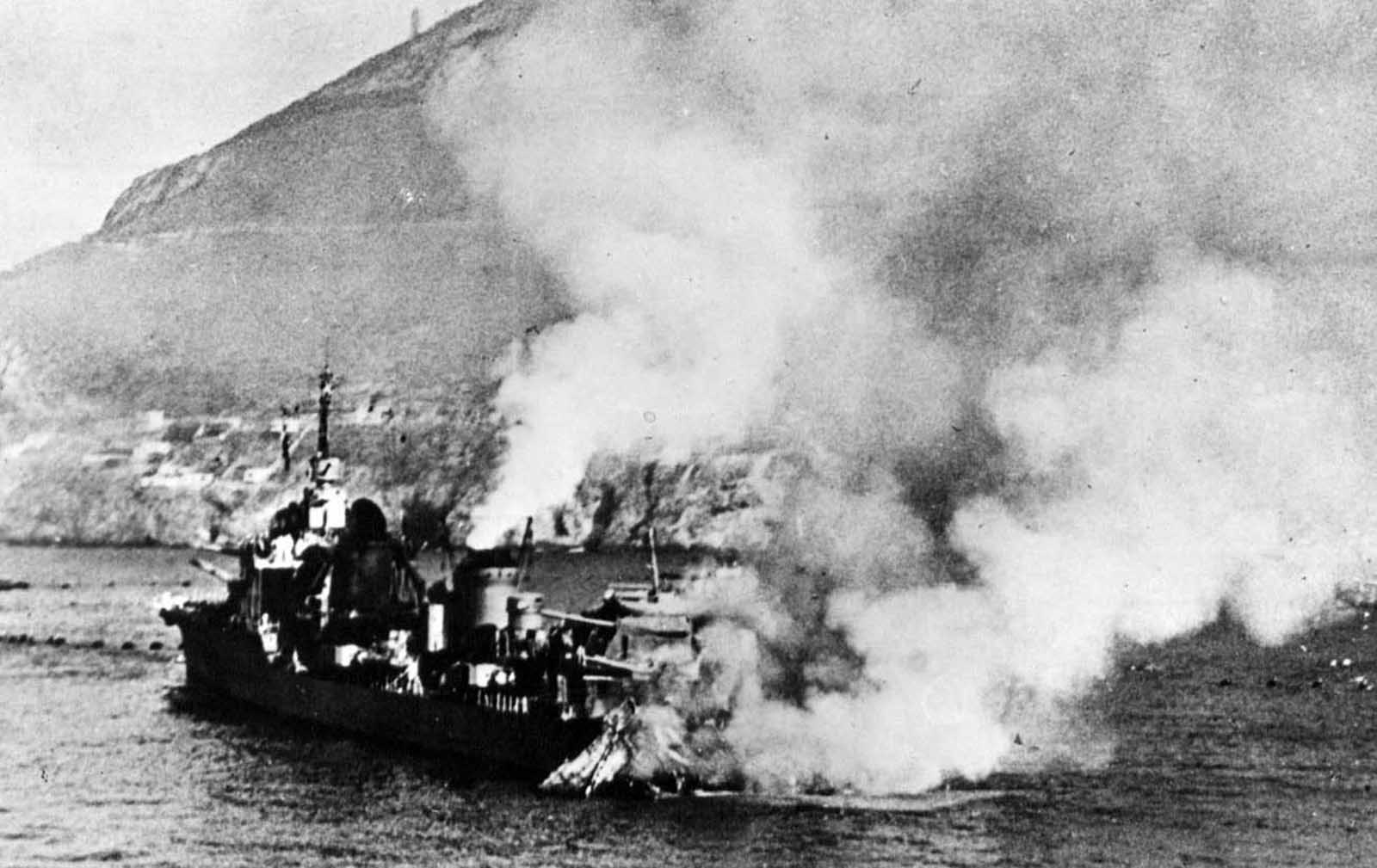
French destroyer Mogador, in flames after being shelled during the British attack on Mers-el-Kebir, French Algeria, on July 3, 1940. After France signed an armistice with Germany, the British government moved to destroy what it could of the French Navy, trying to prevent the ships from falling into German hands. Several ships were badly damaged, one sunk, and 1,297 French sailors were killed in the attack.

Heavy mortars of Hitler’s Army are set in position under cliffs on the French side of the English Channel, at Fecamp, France, in 1940, as Germany occupied France and the low countries.
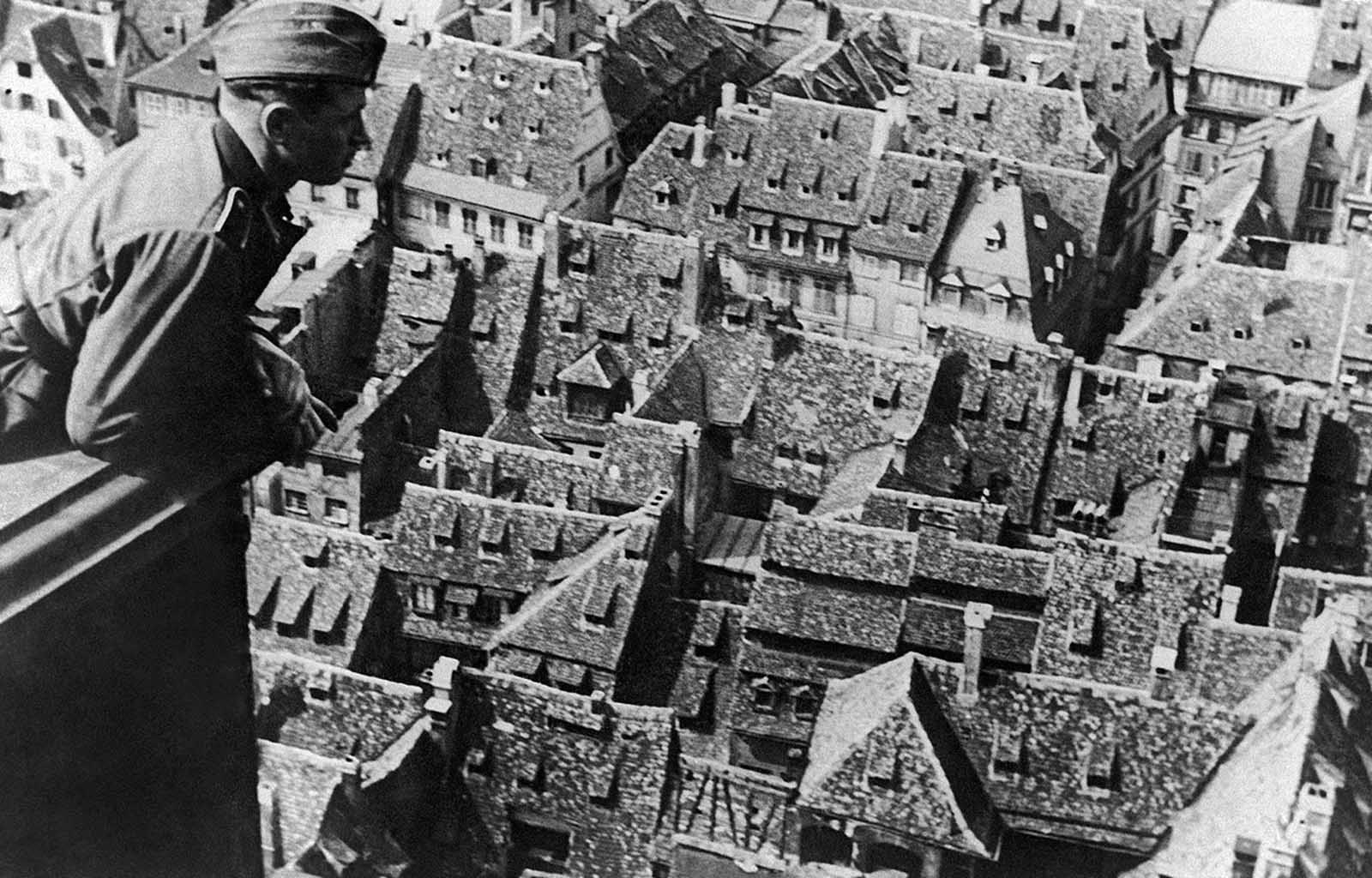
A German soldier stands in the tower of the cathedral, gazing down upon the captured French city of Strasbourg on July 15, 1940. Adolf Hitler visited the city in June of 1940, declaring plans for the Strasbourg Cathedral, stating that it should become a “national sanctuary of the German people”.
(Photo credit: AP Photo /German War Department / US Army Archives).







